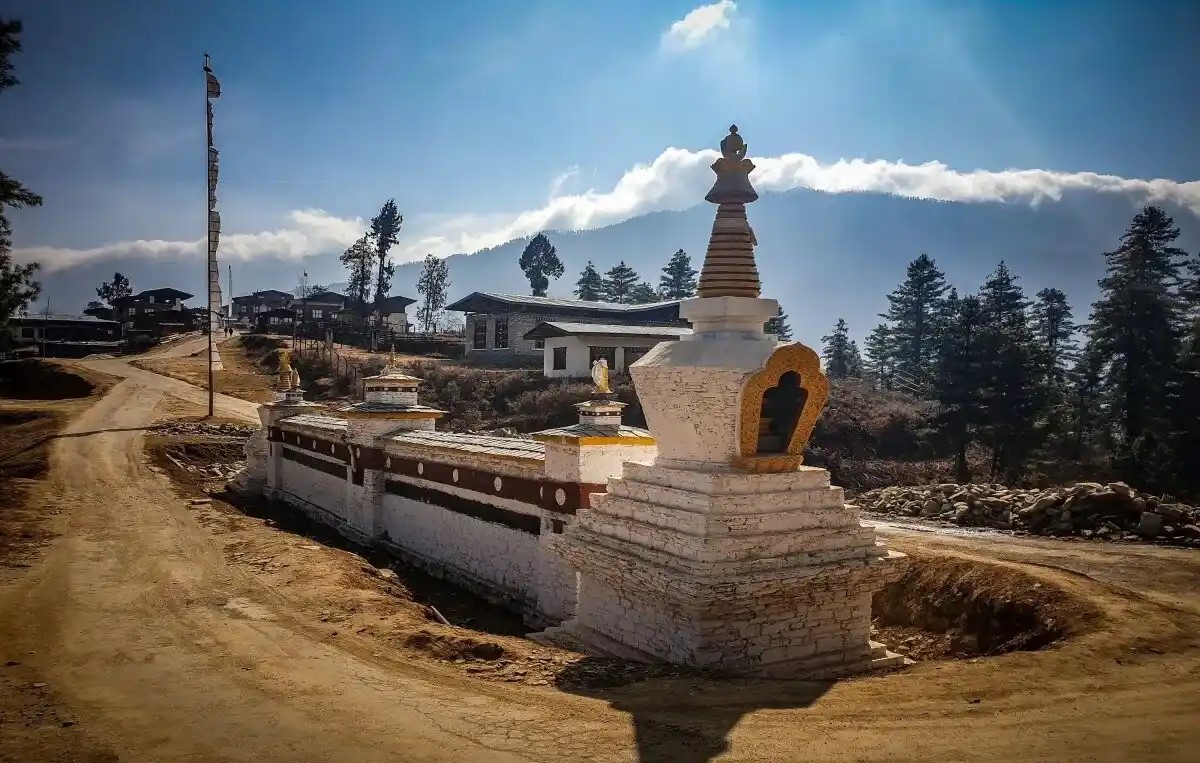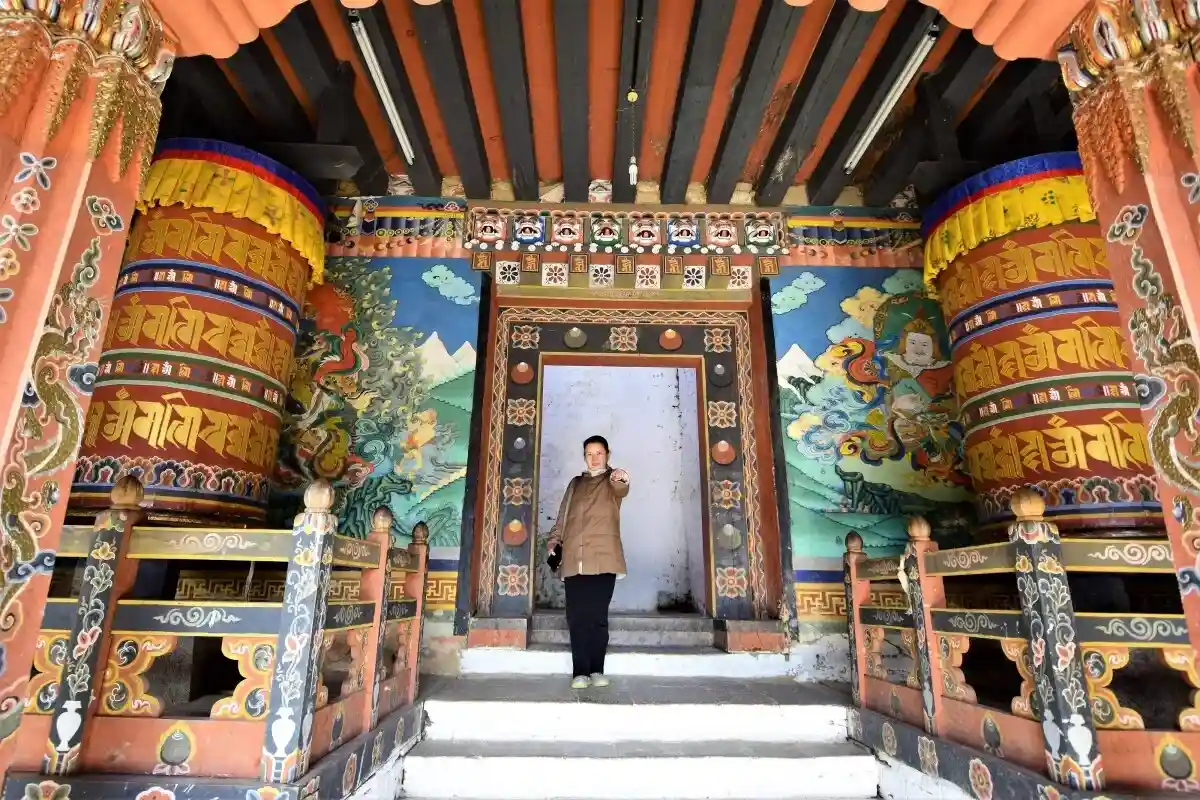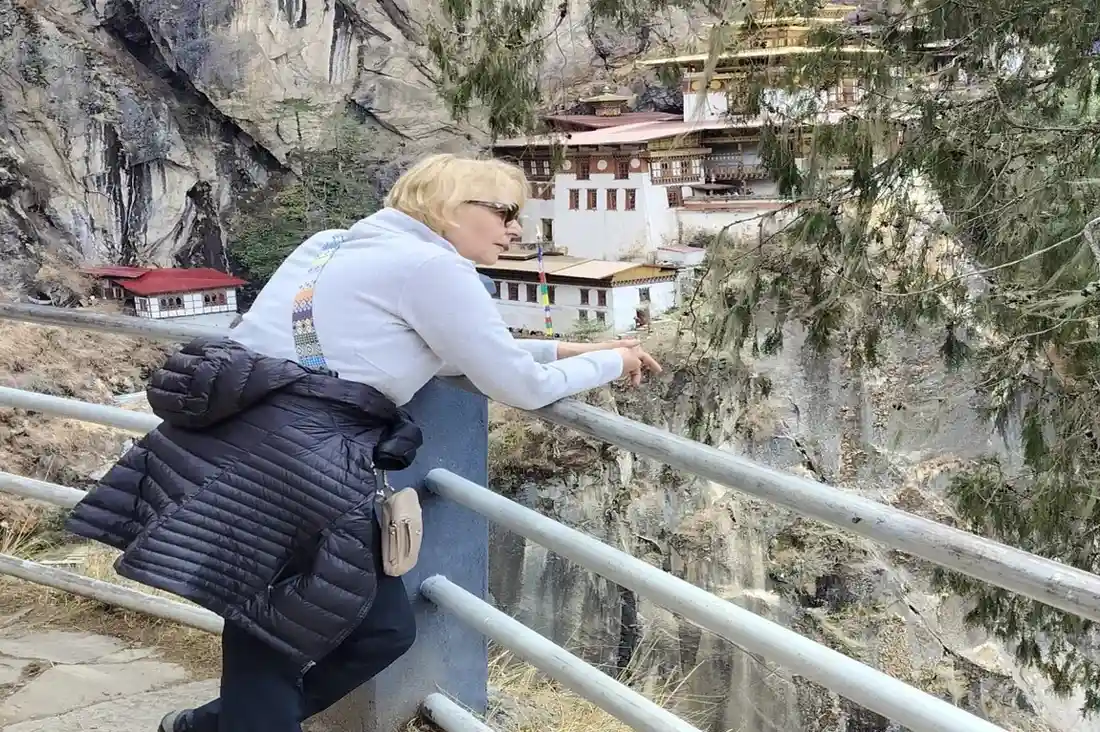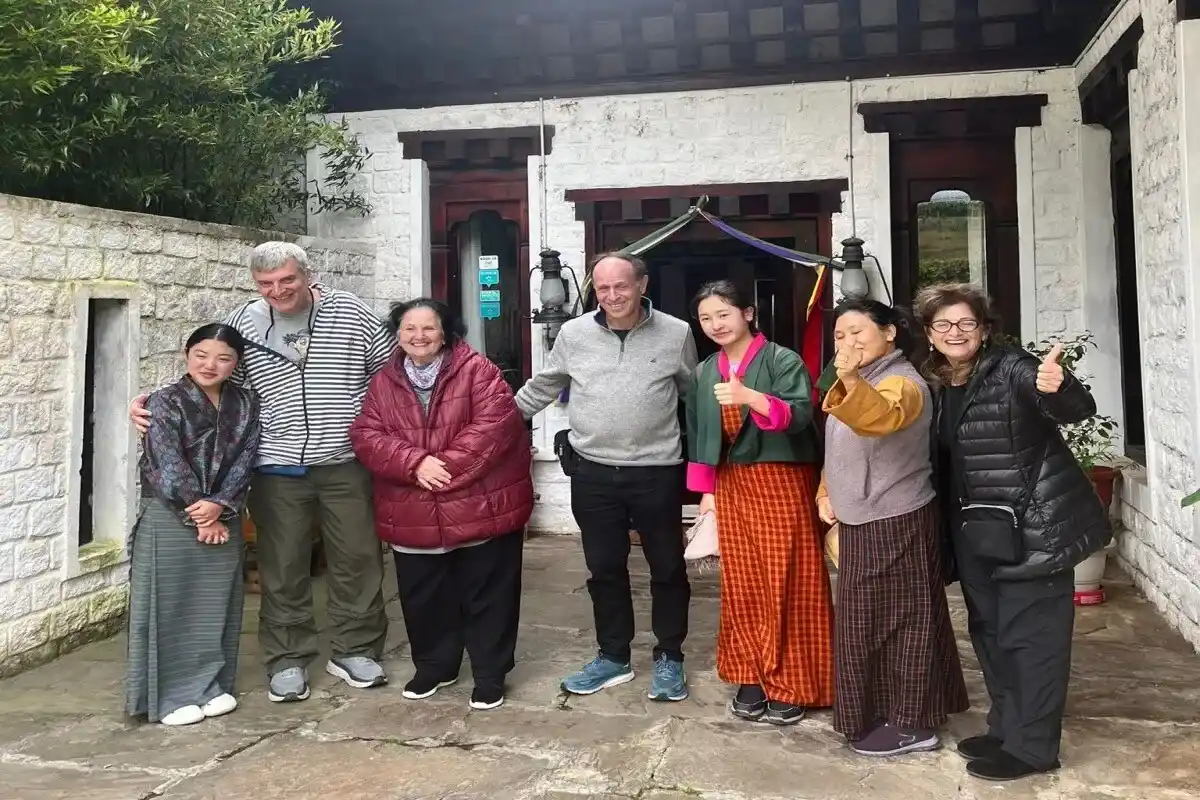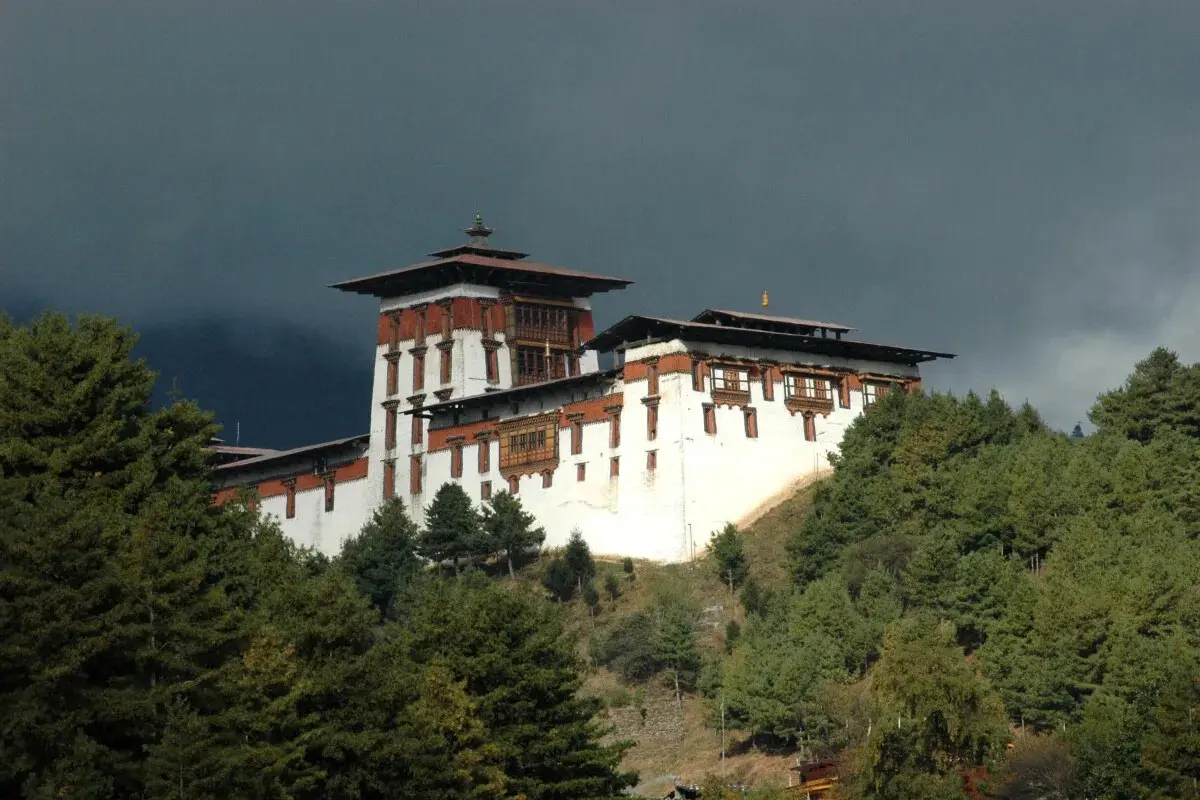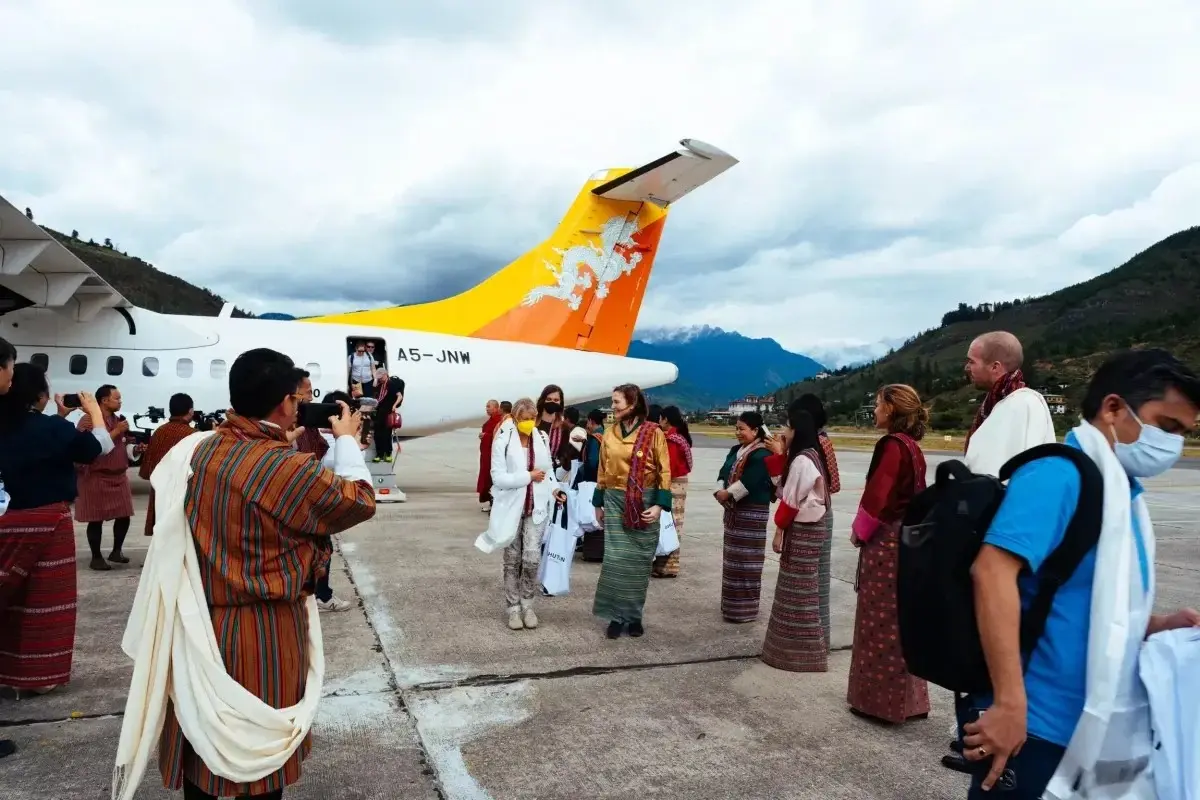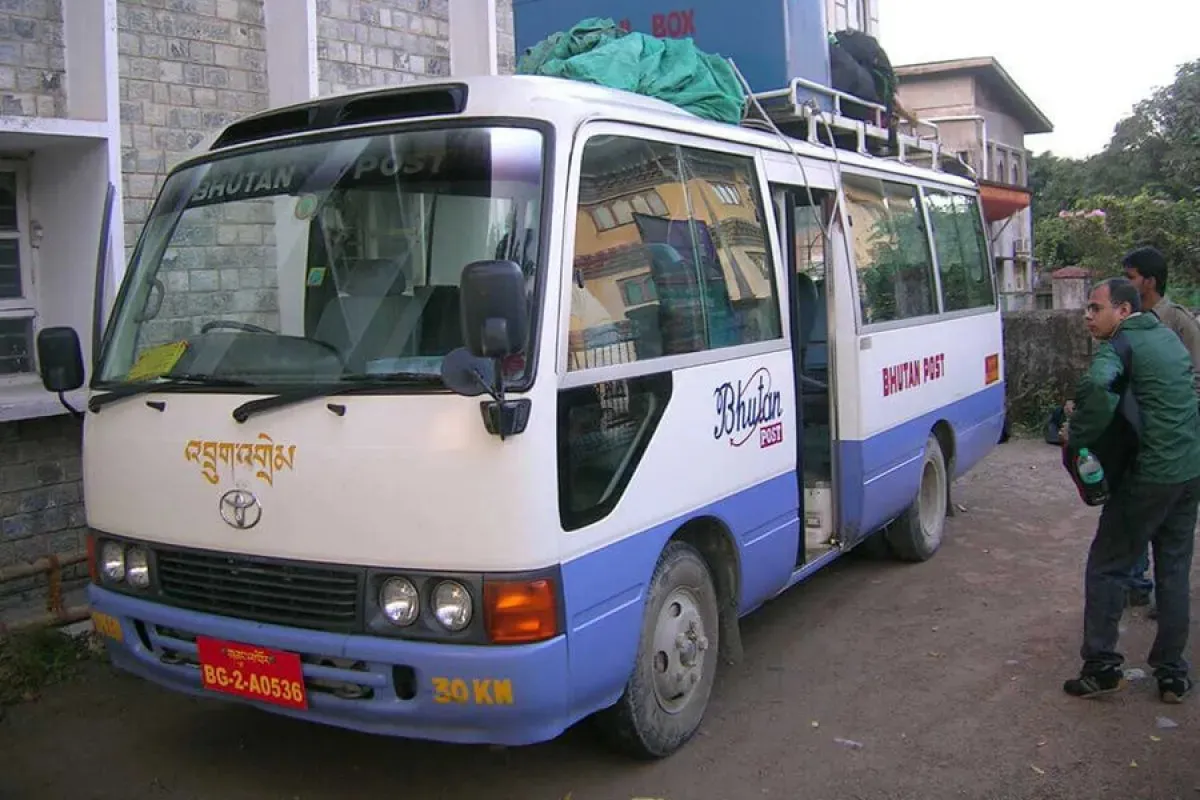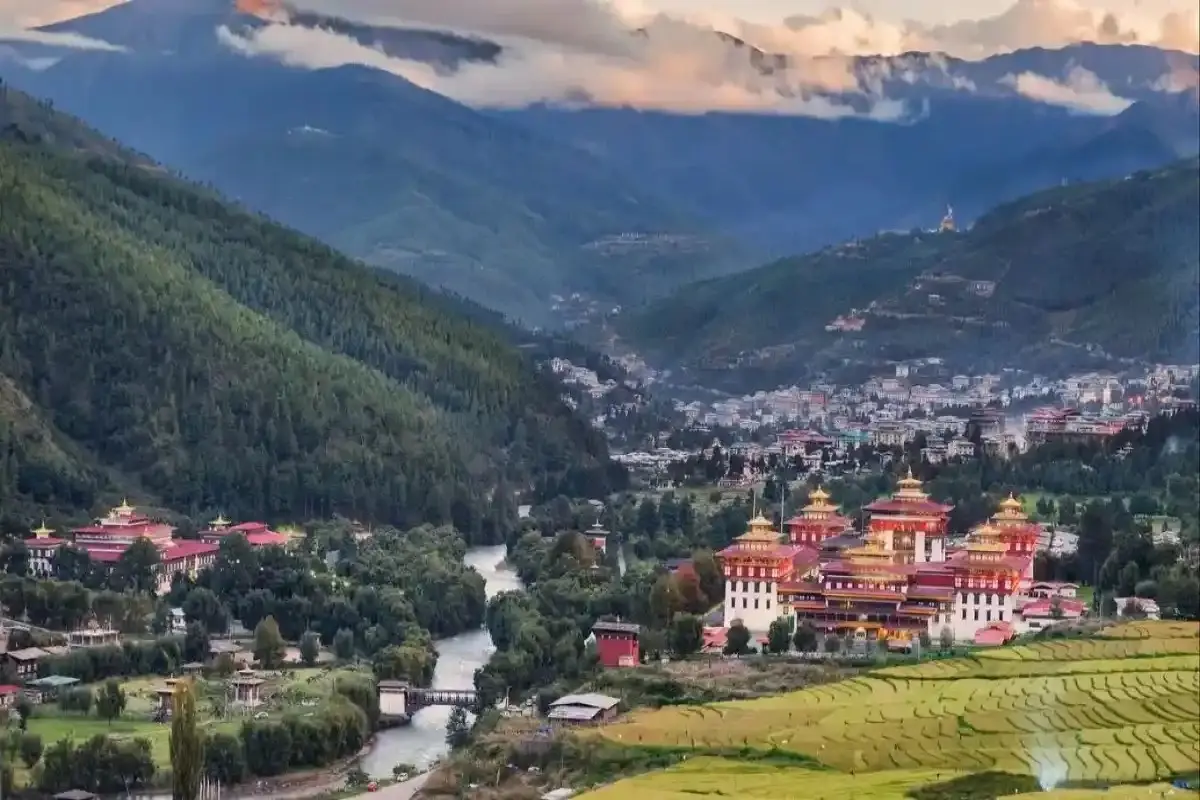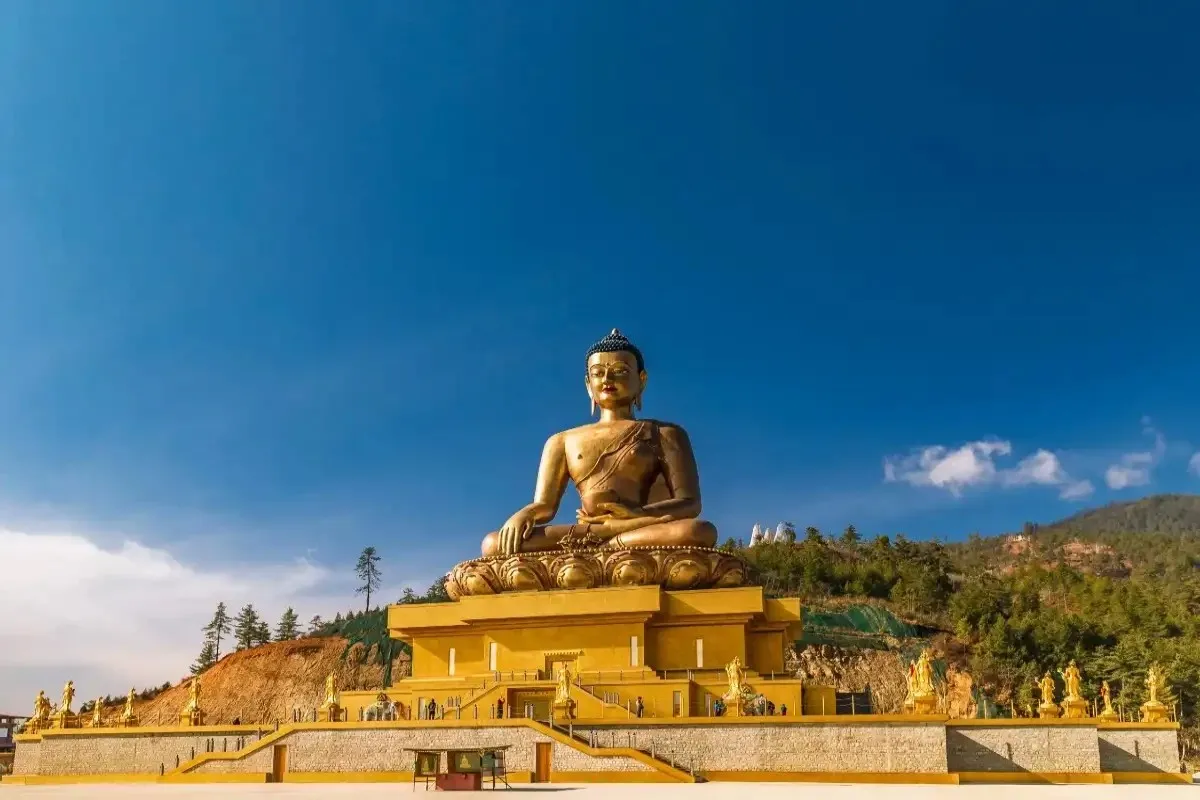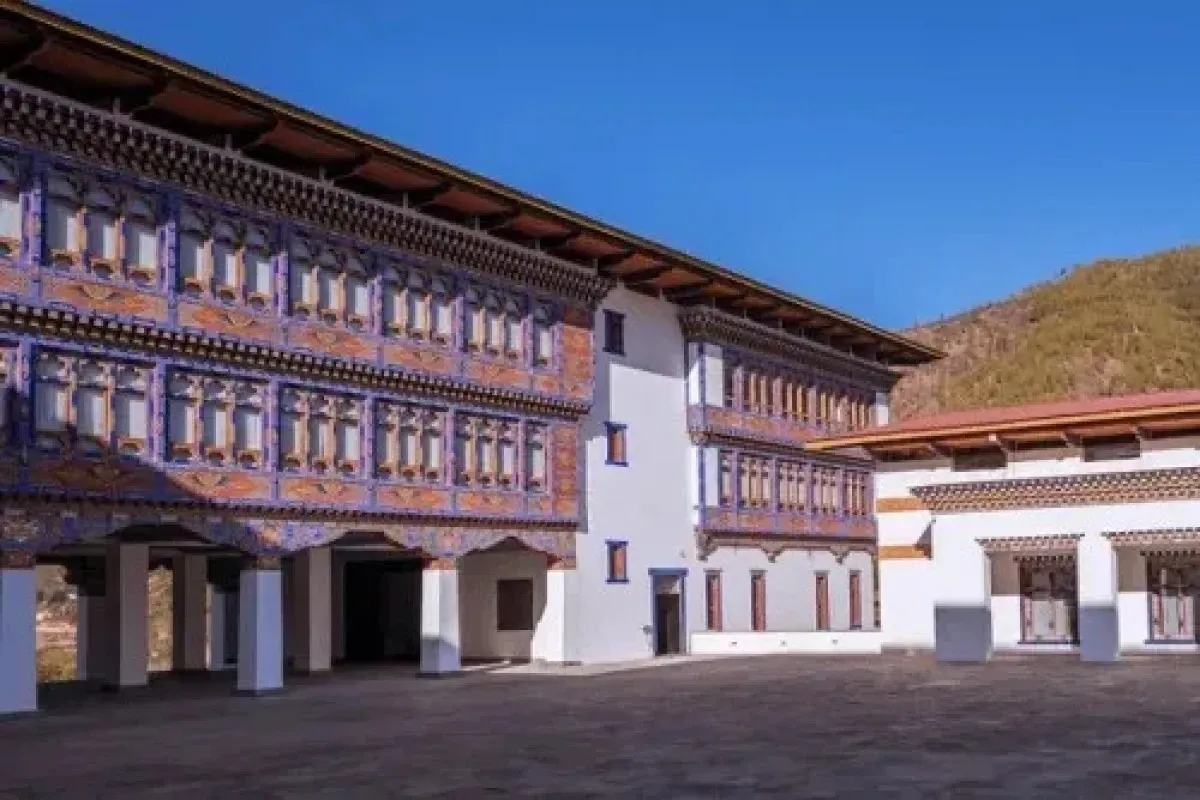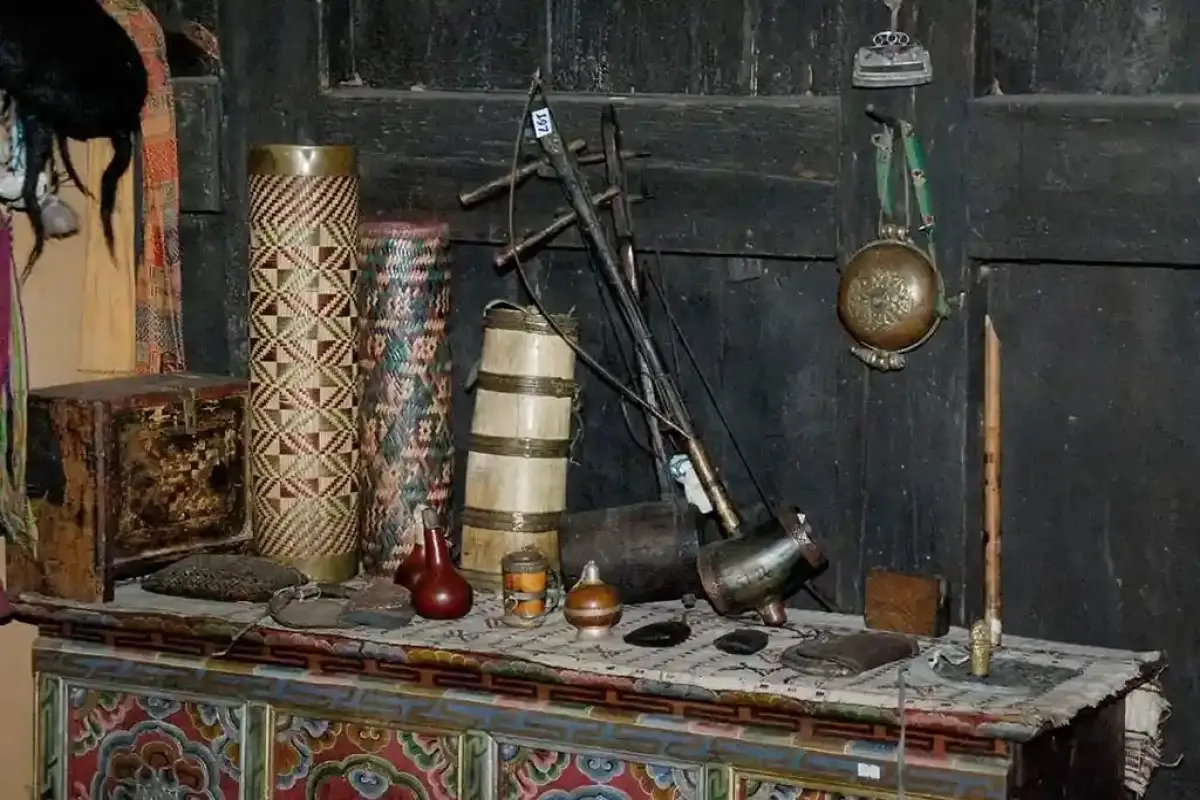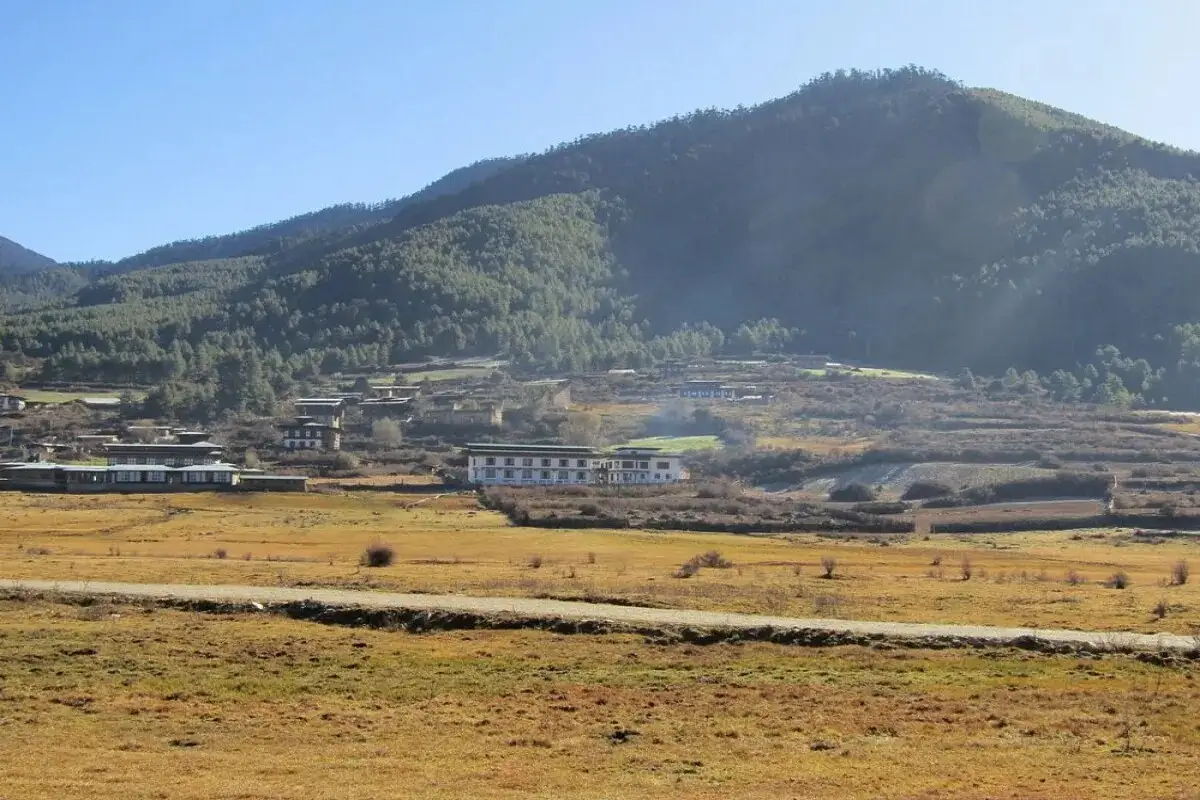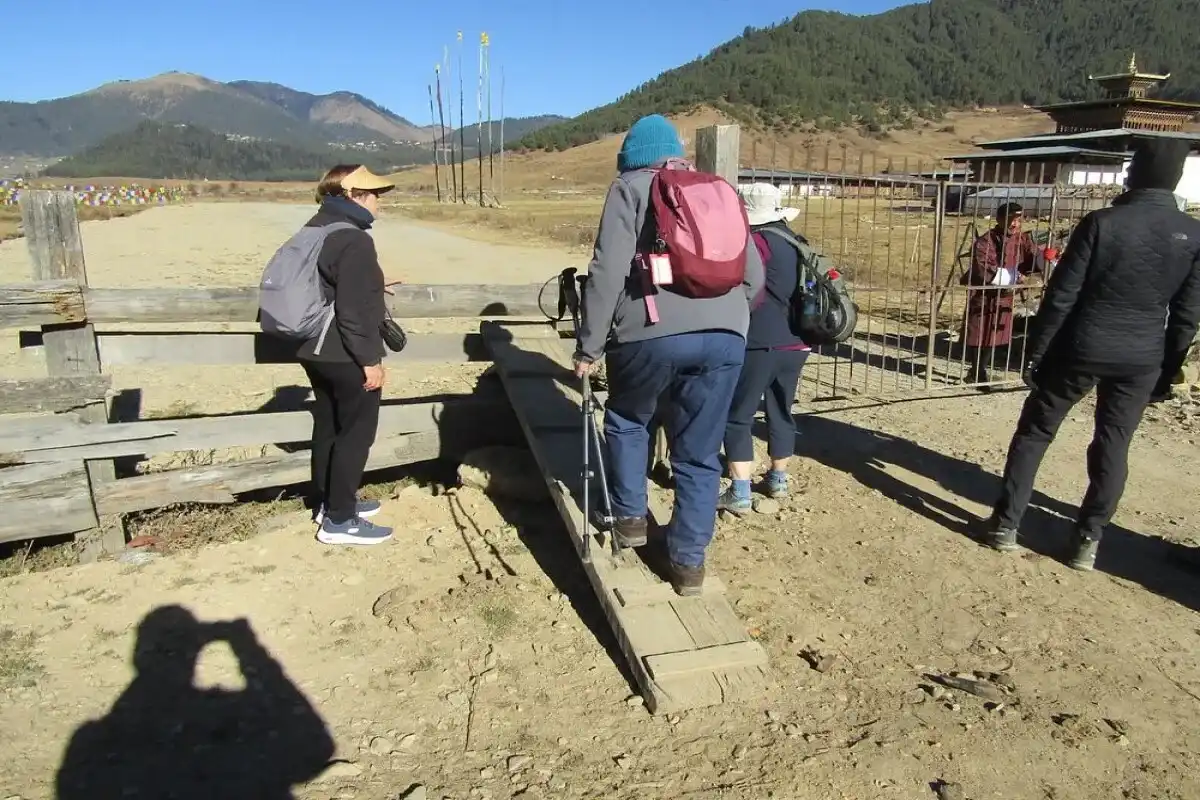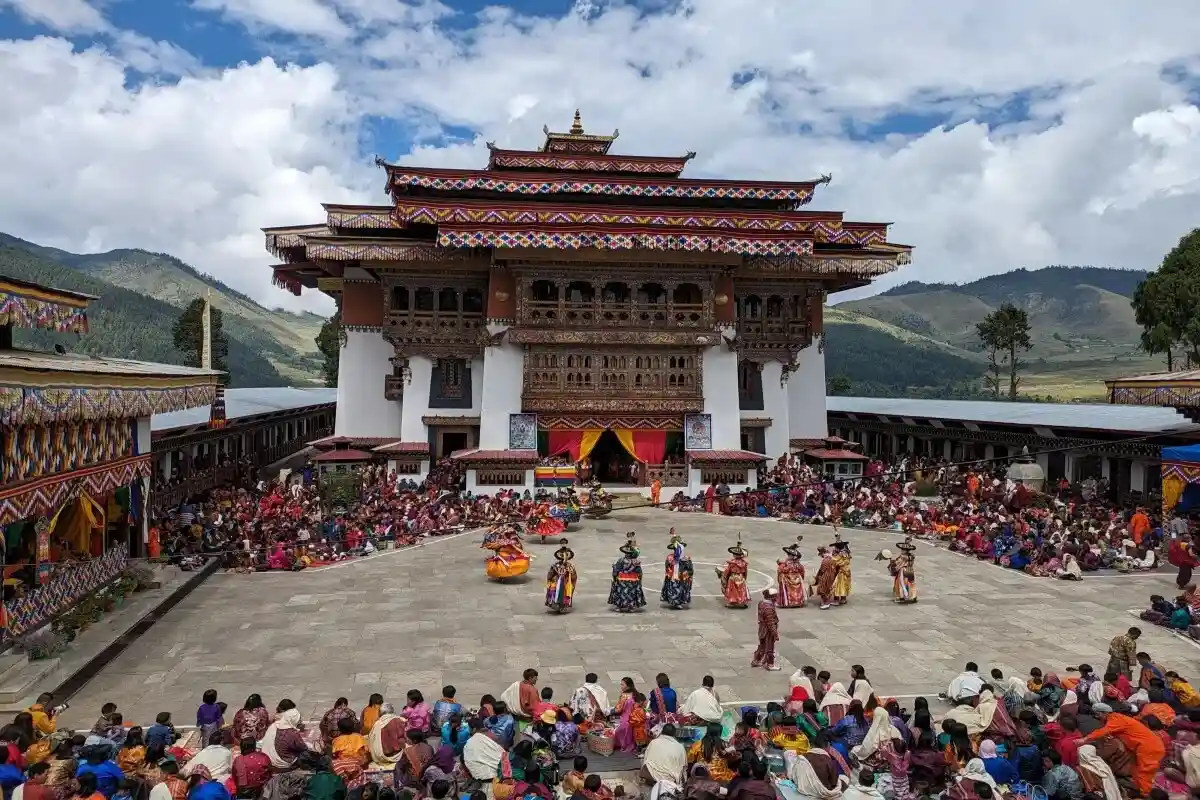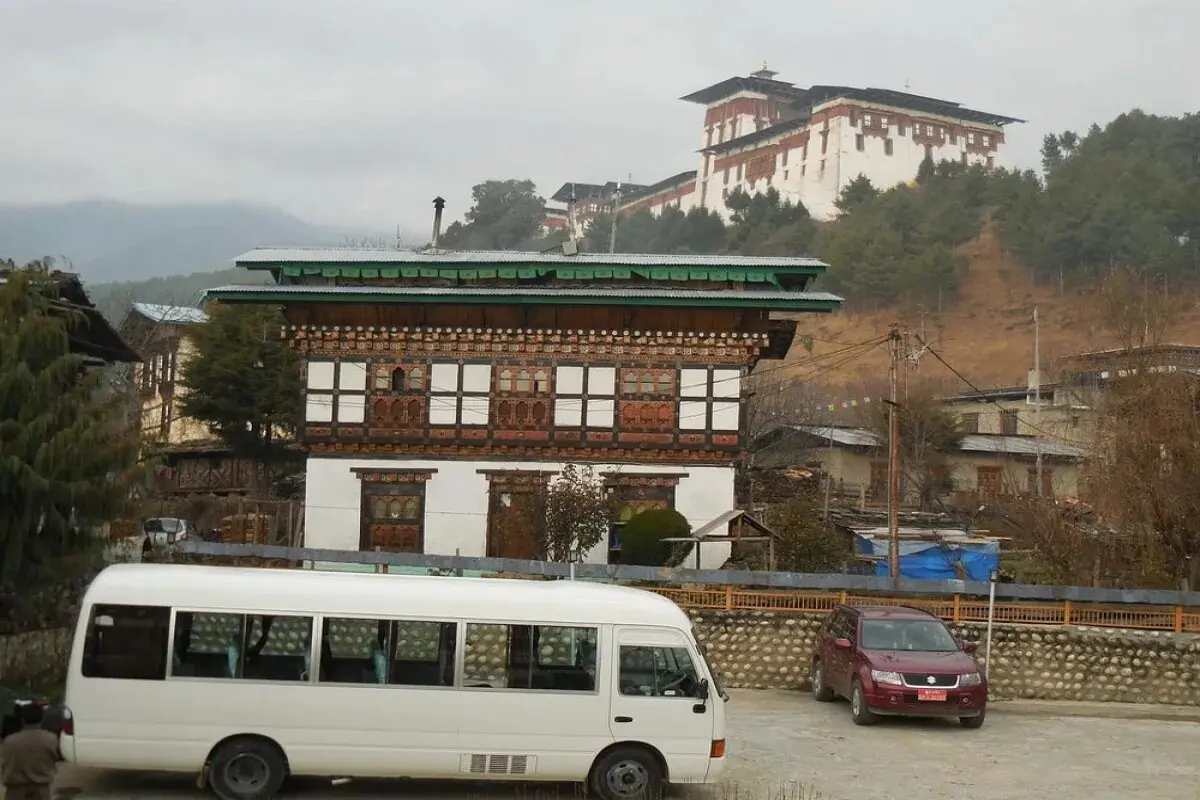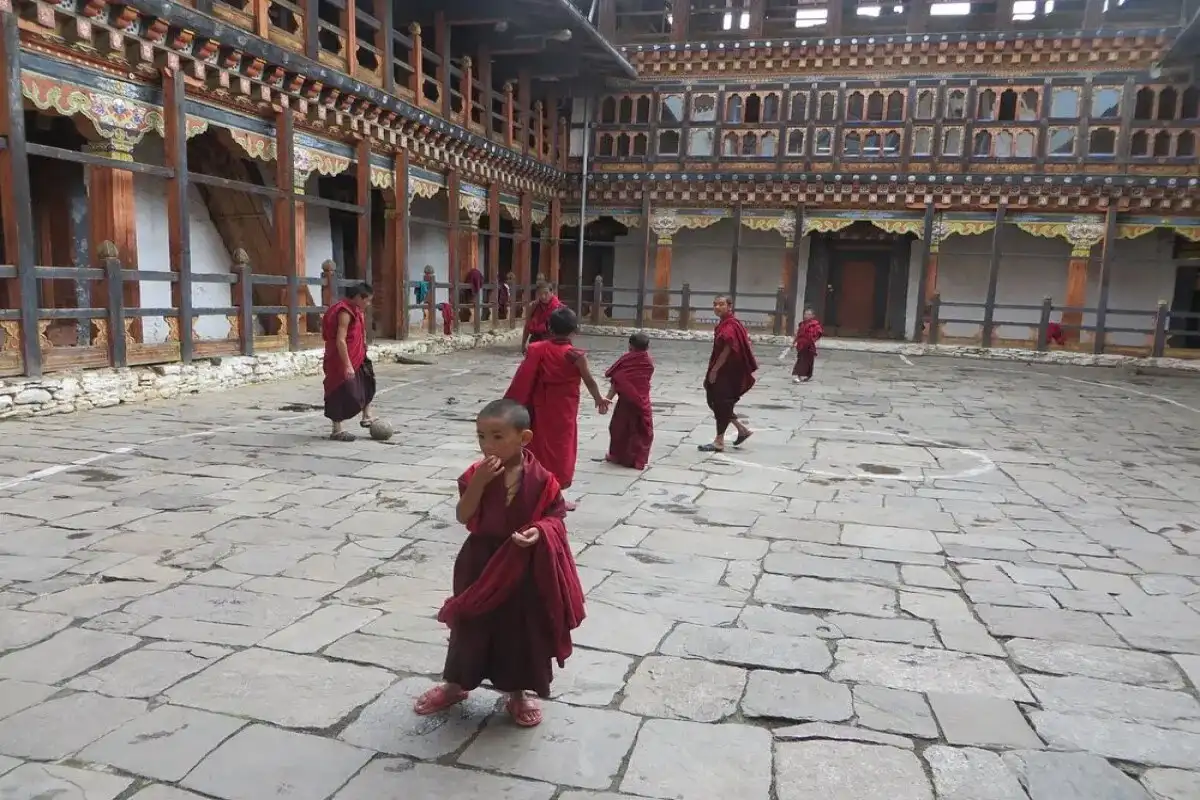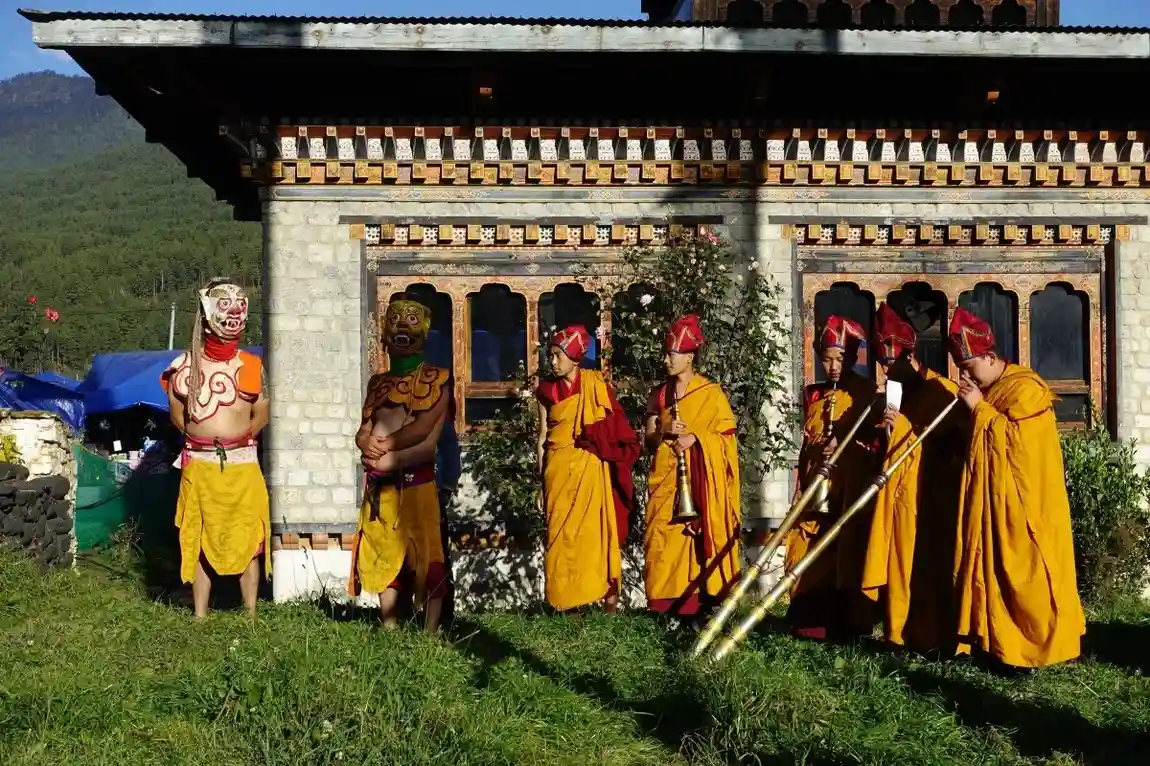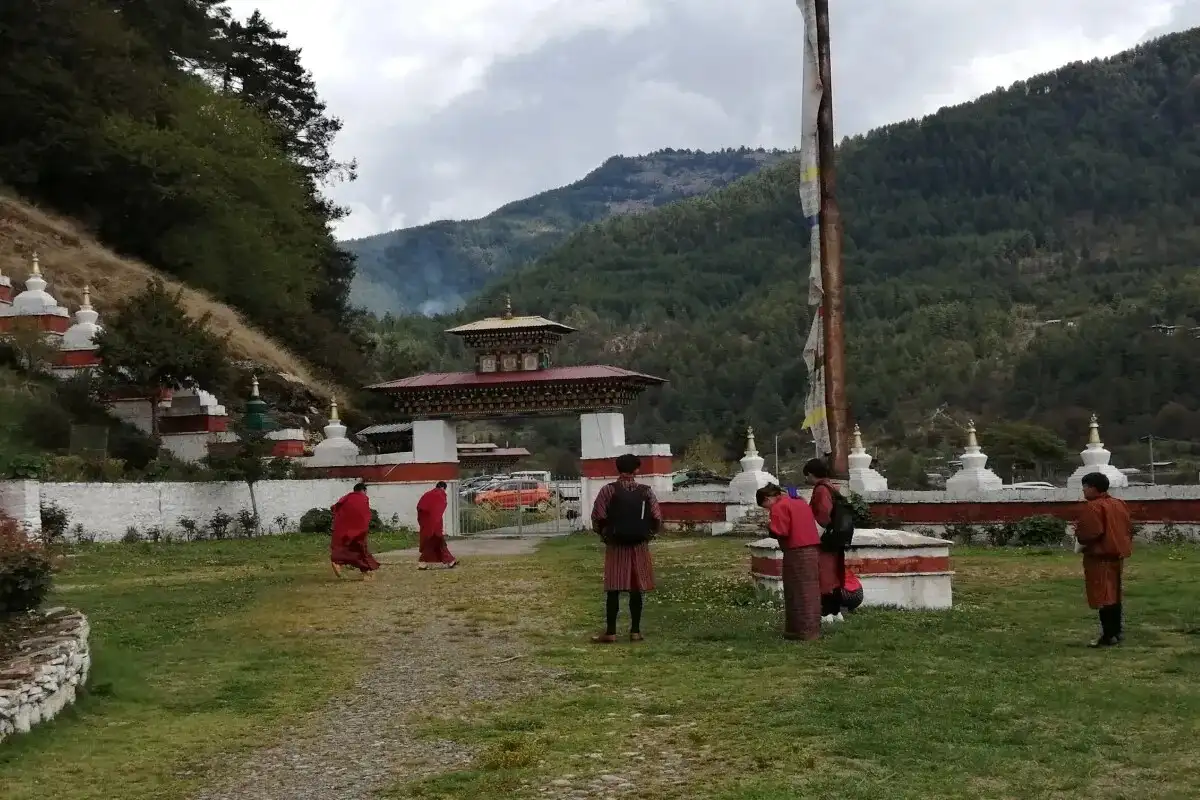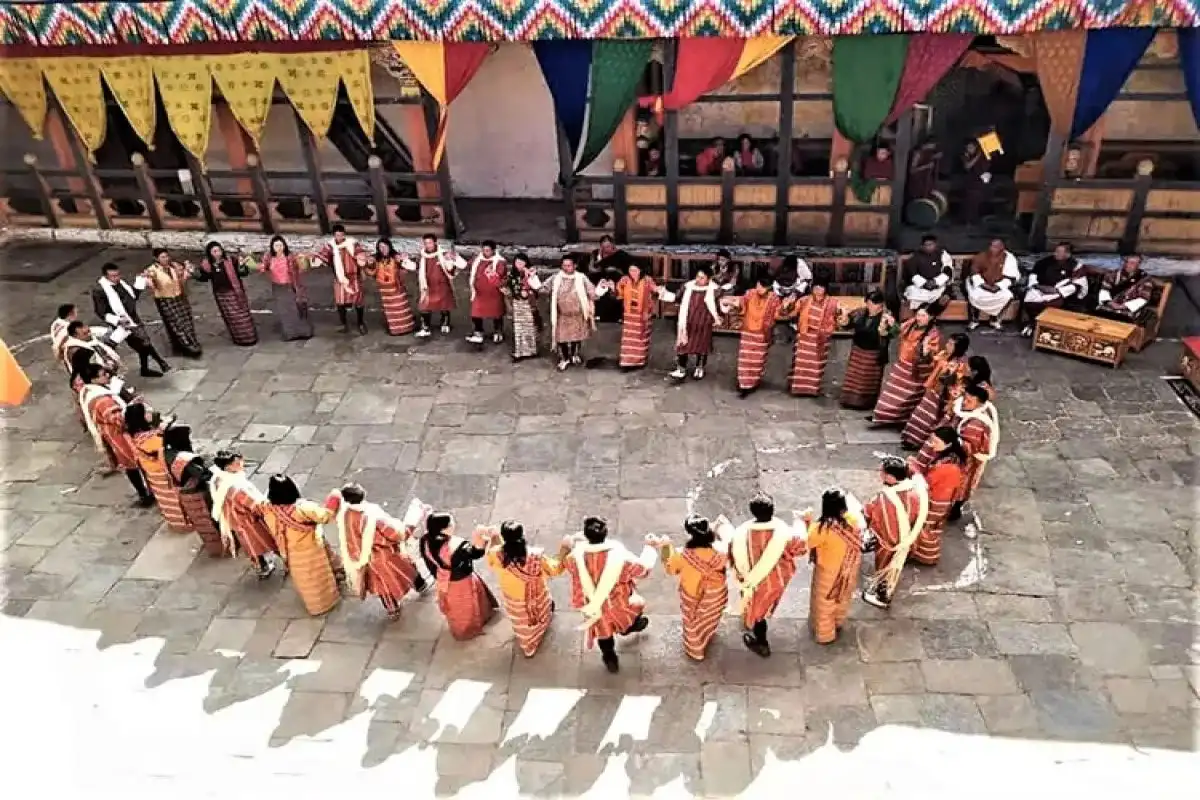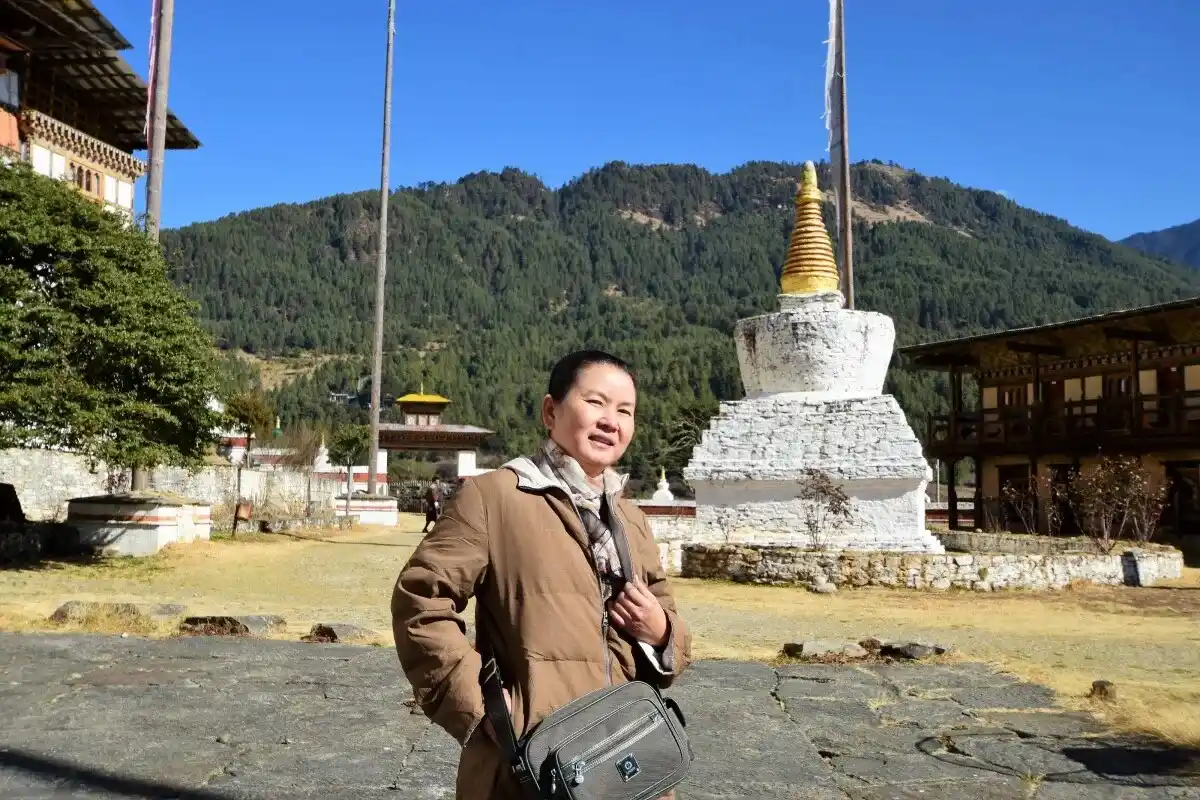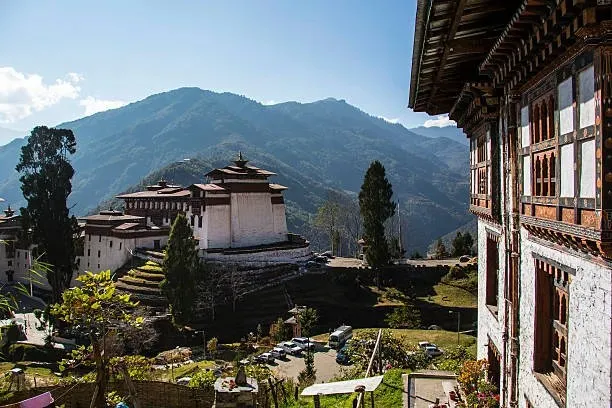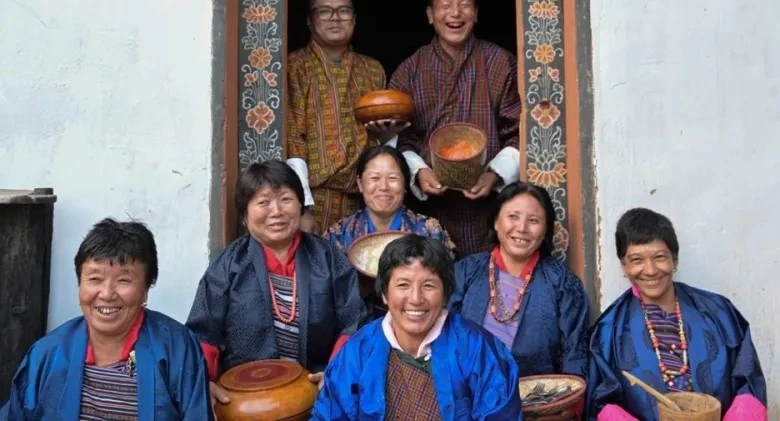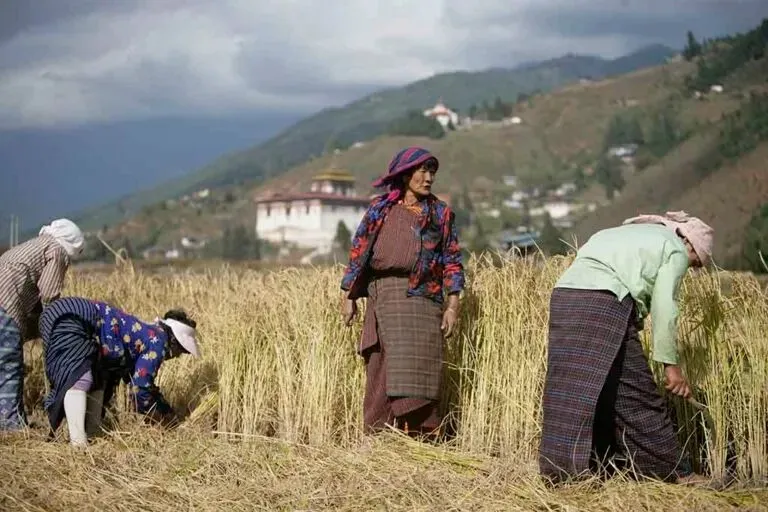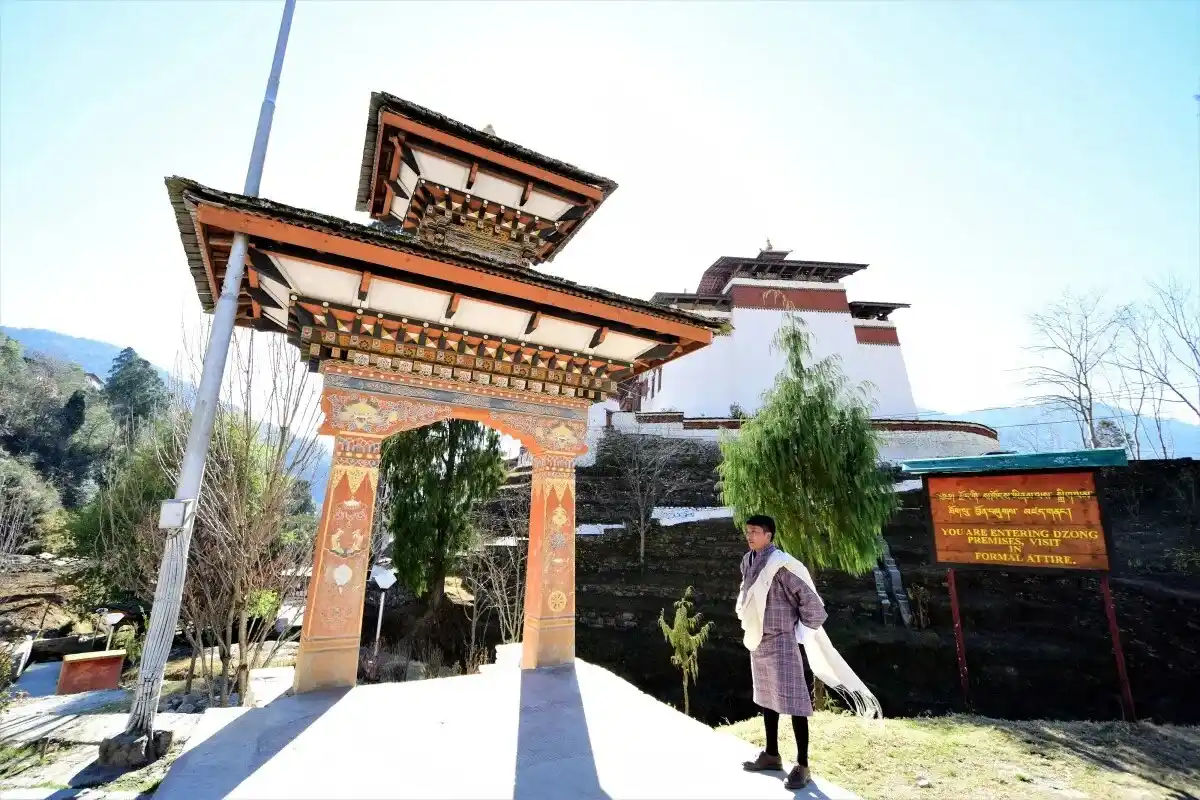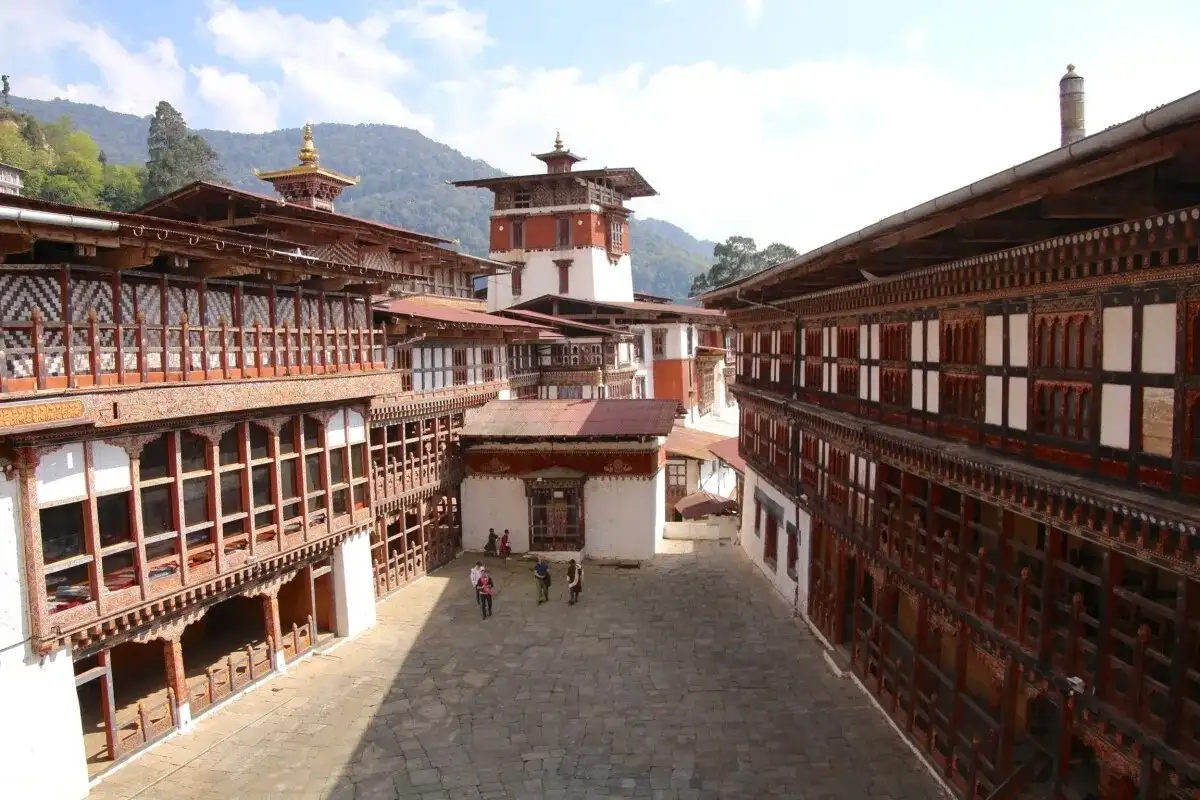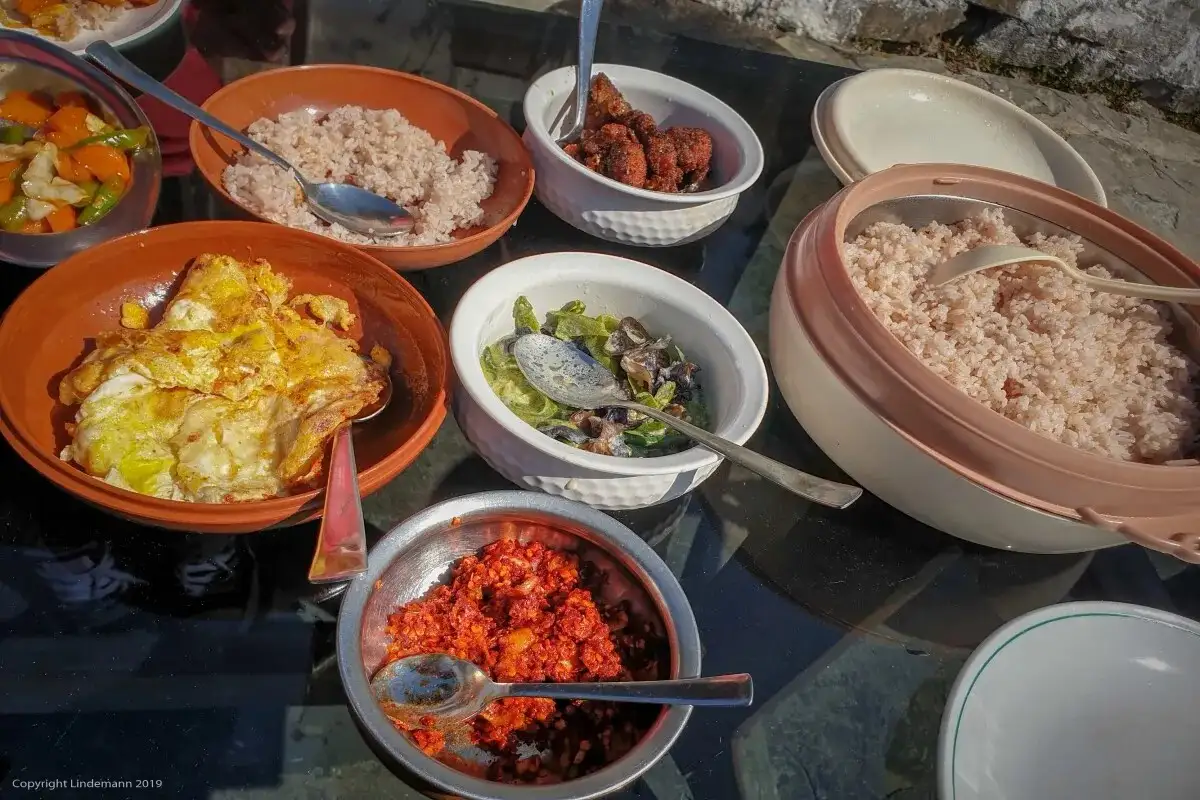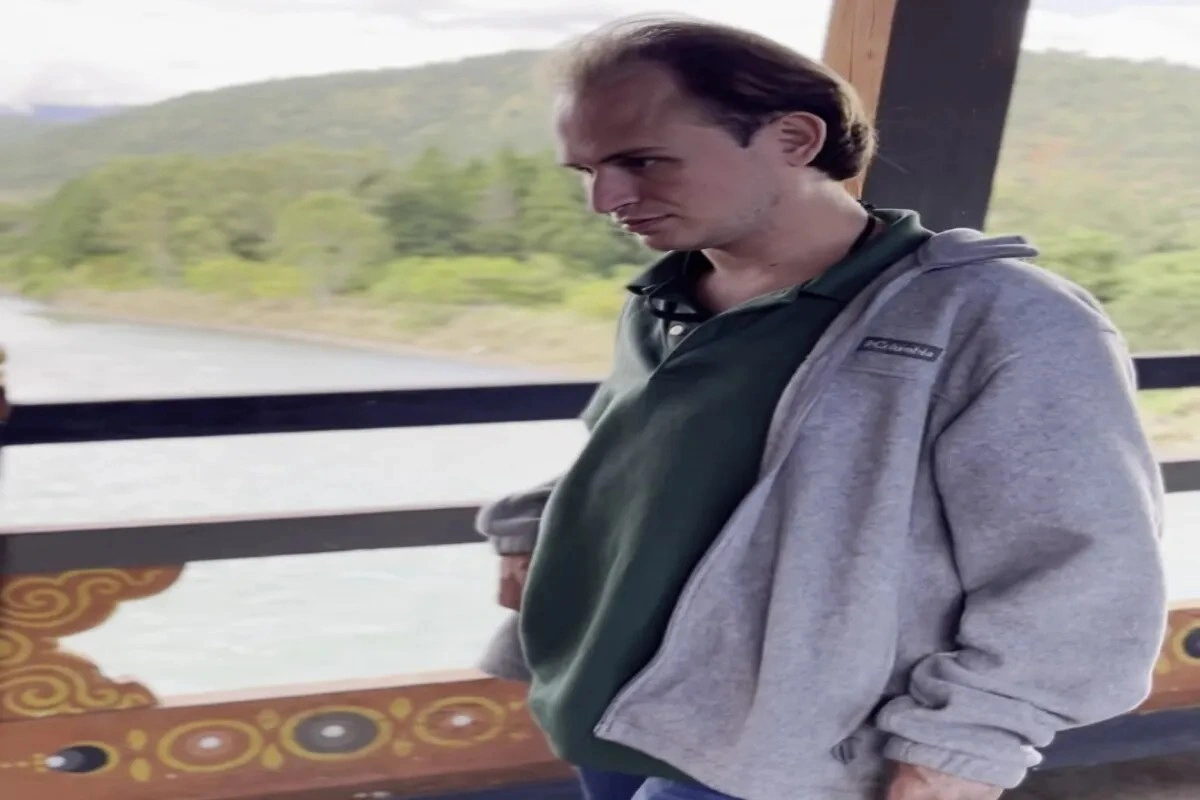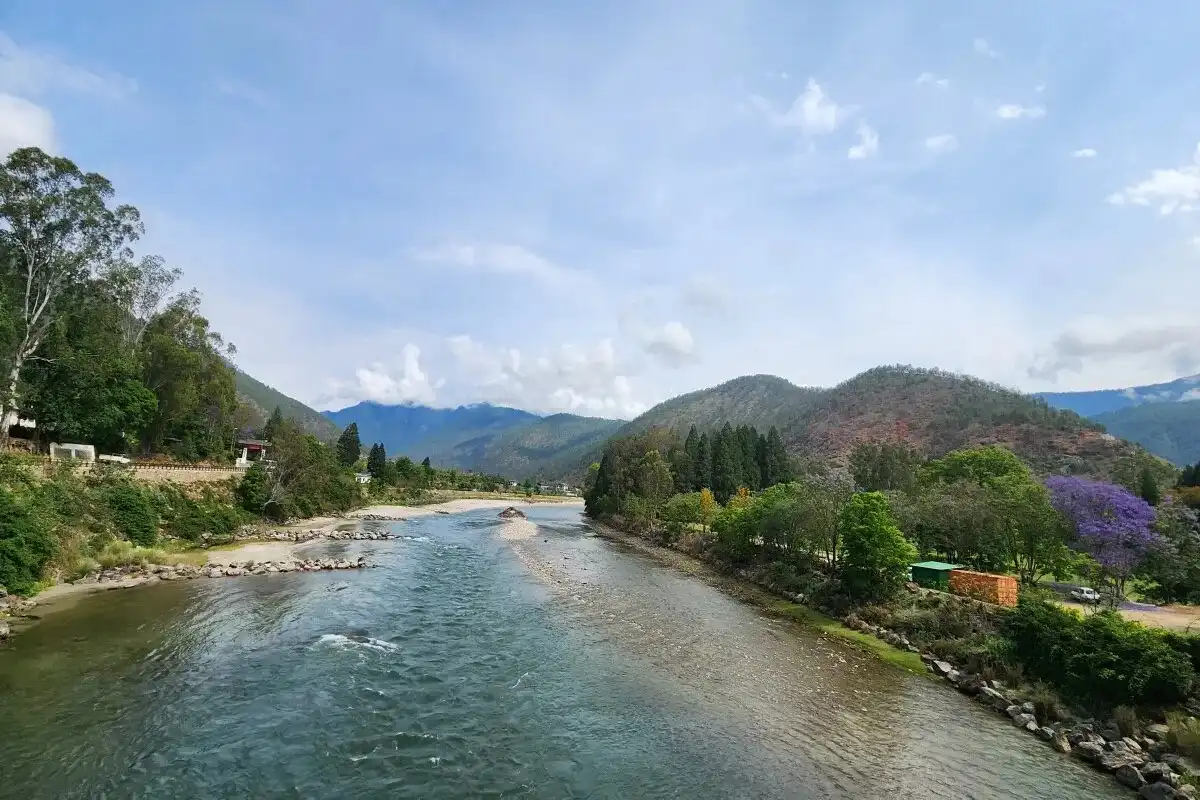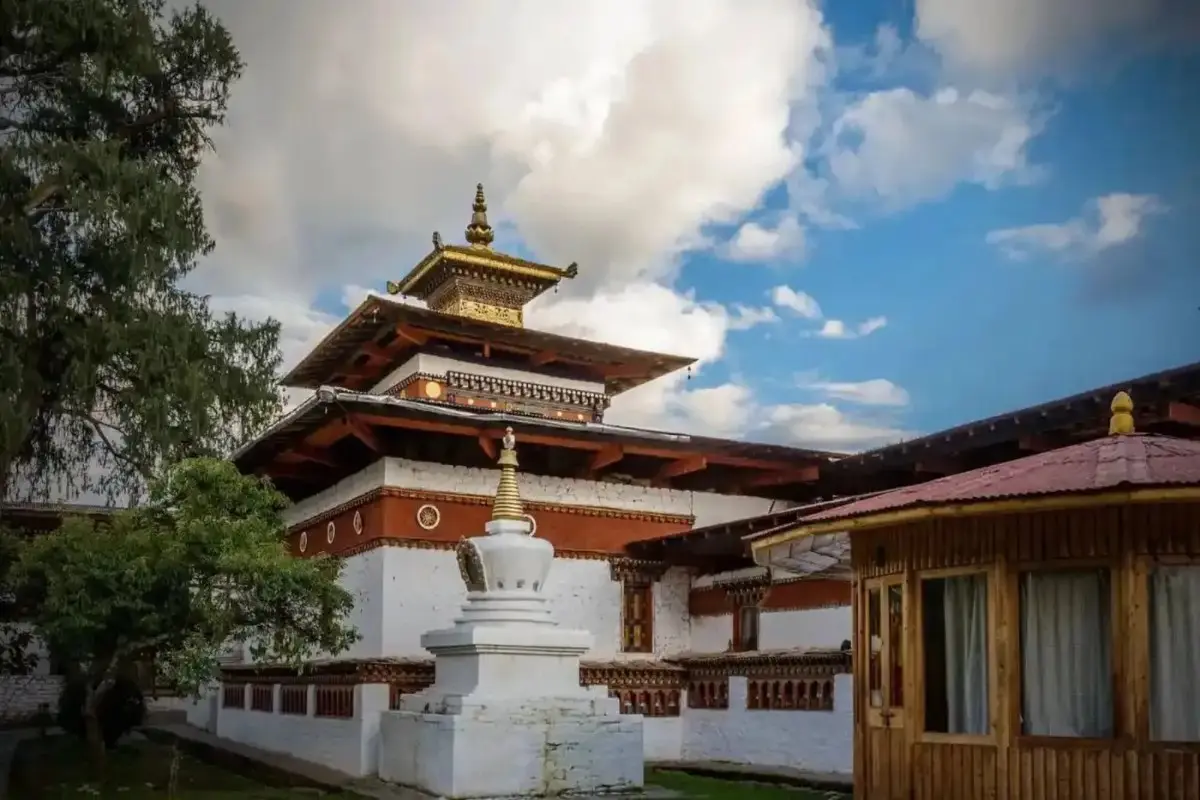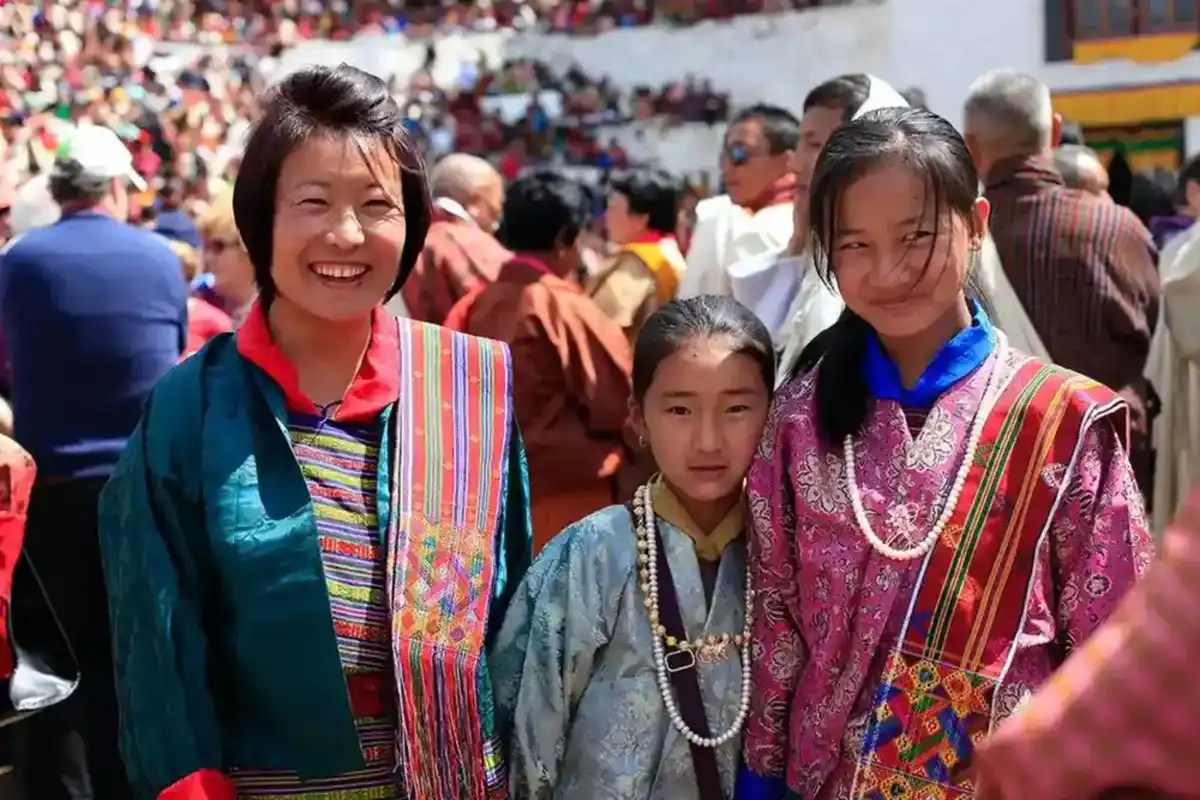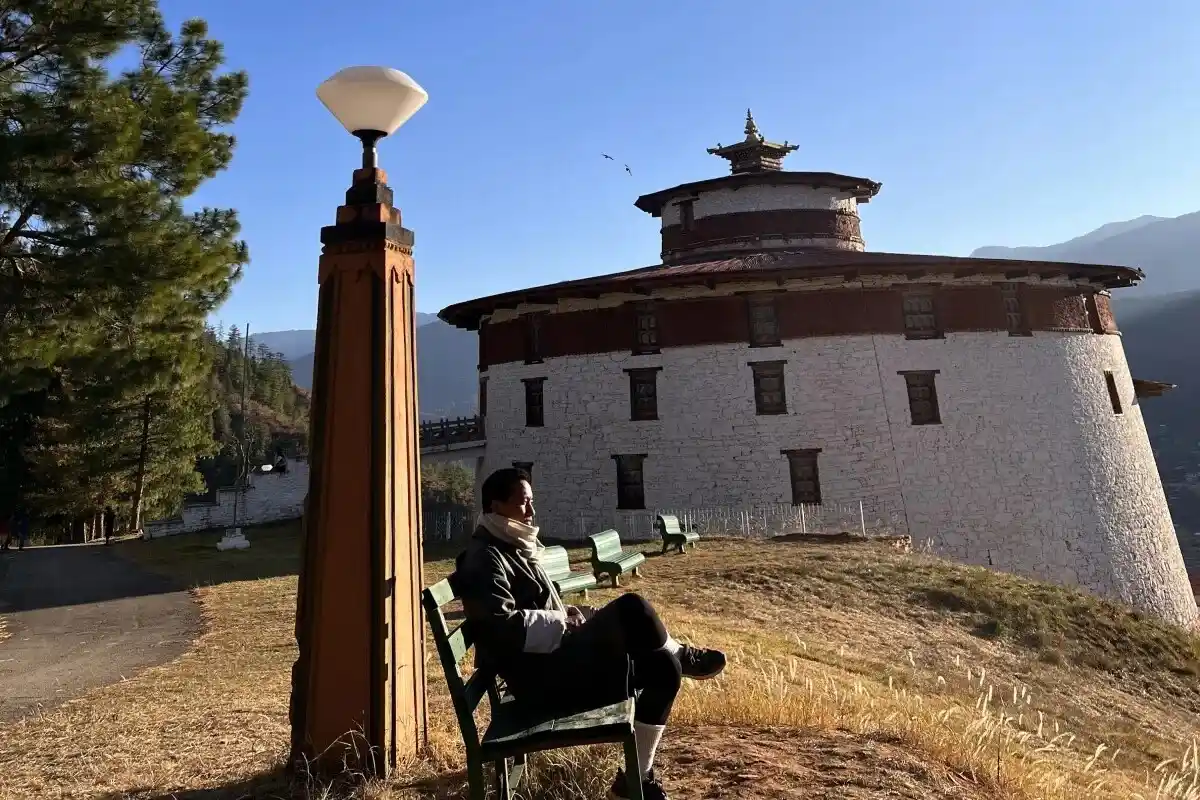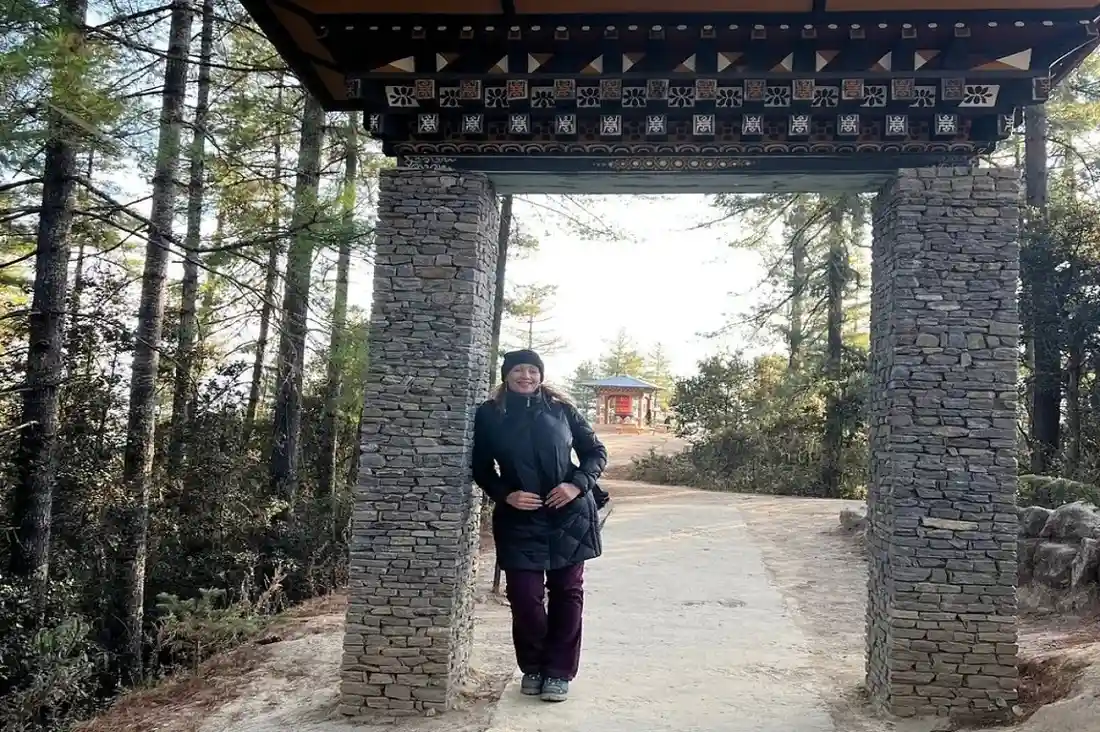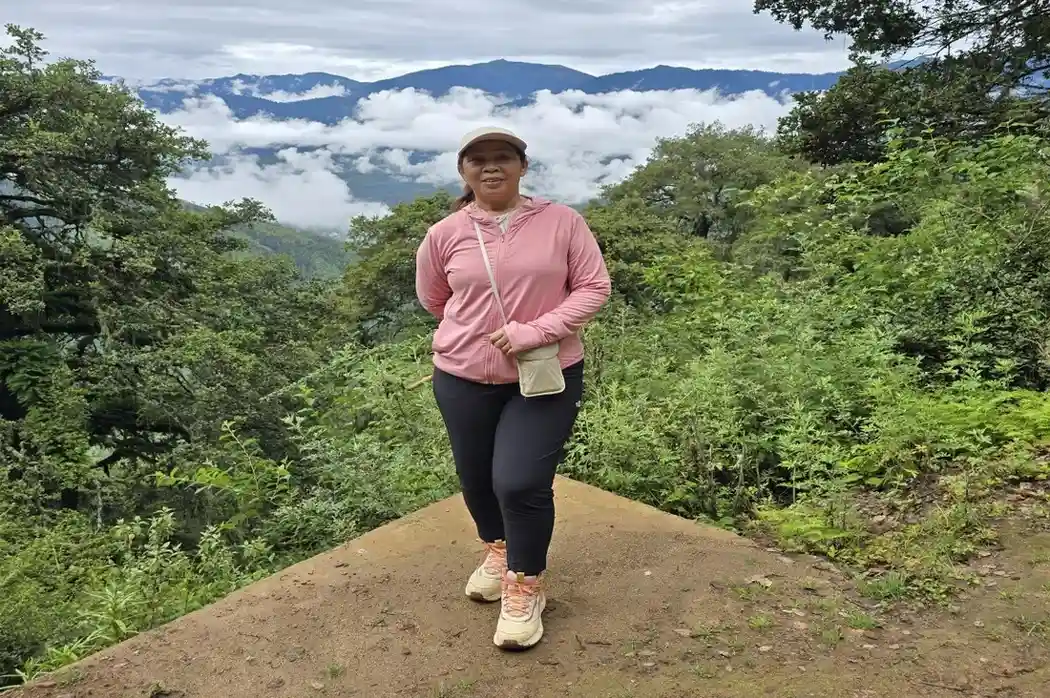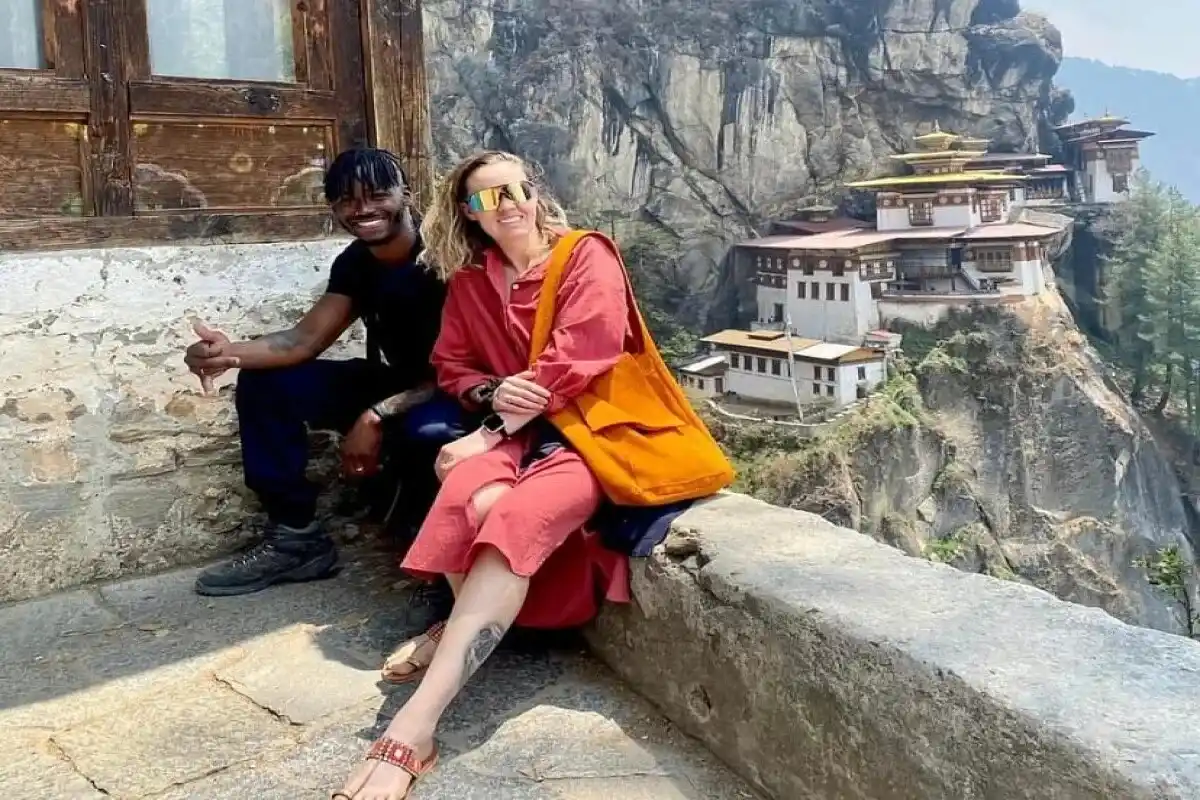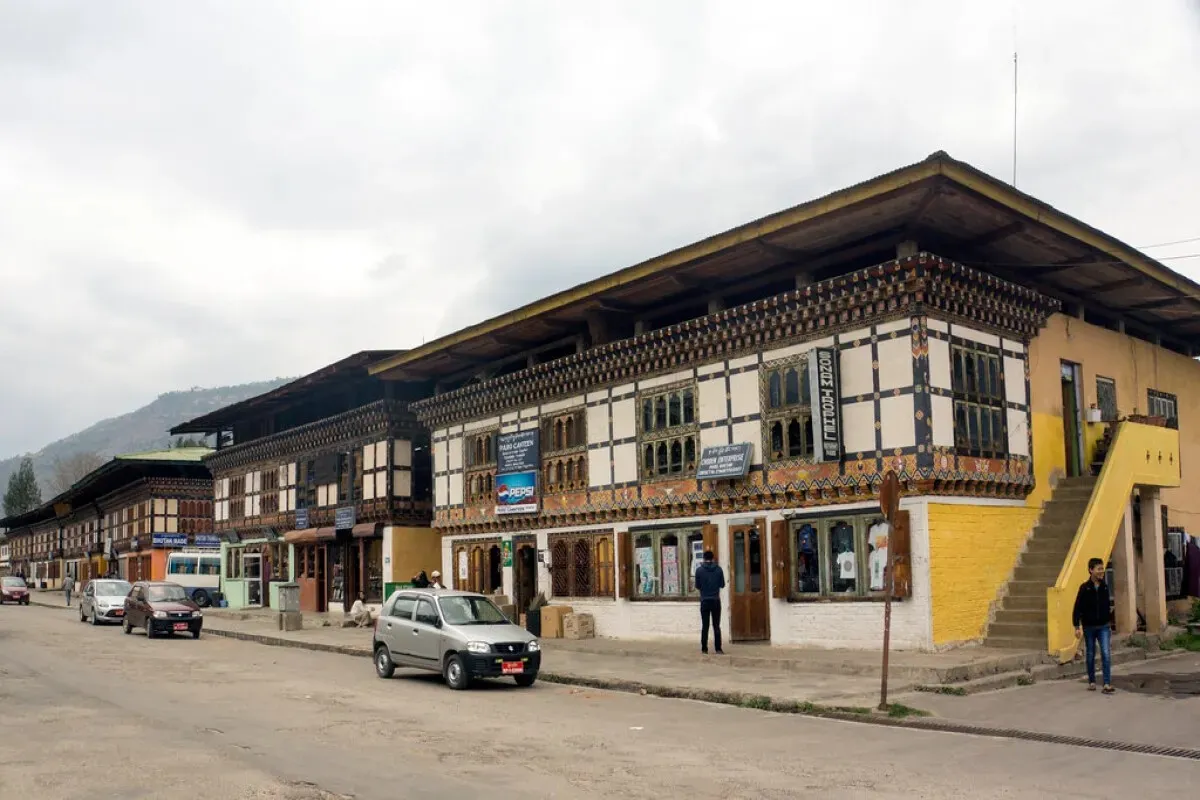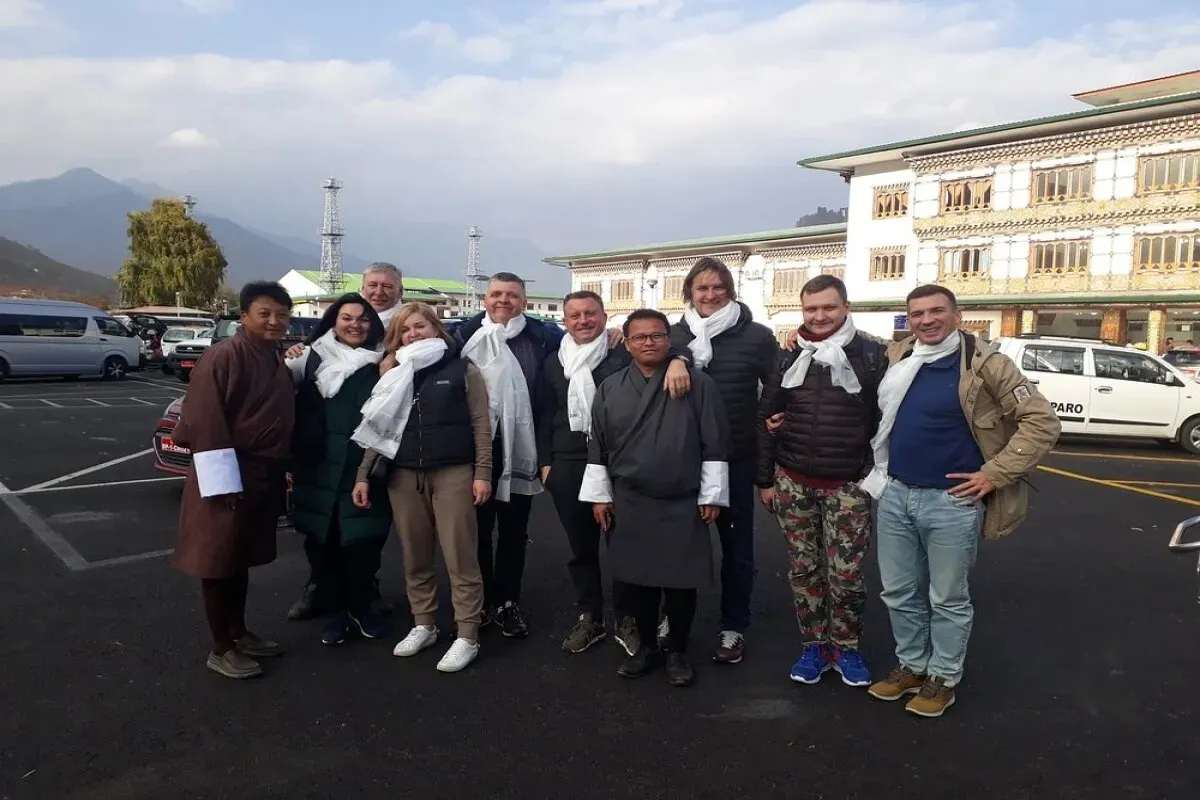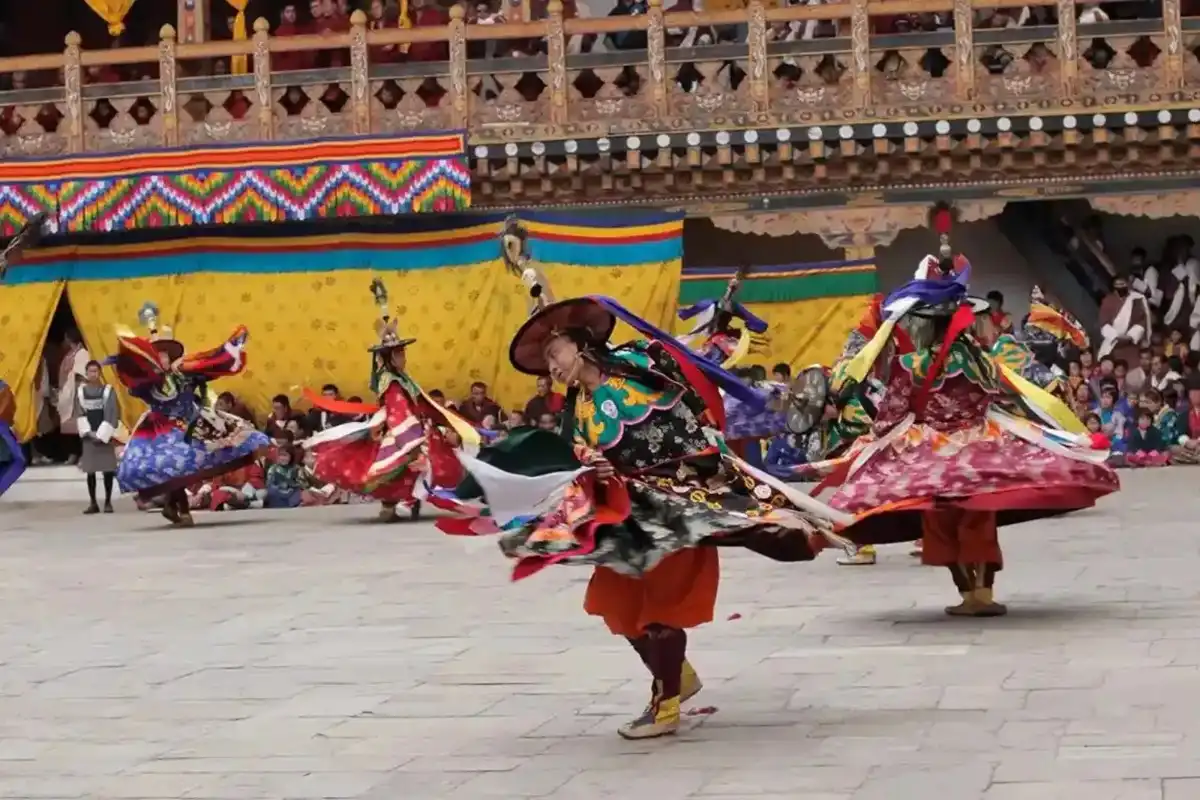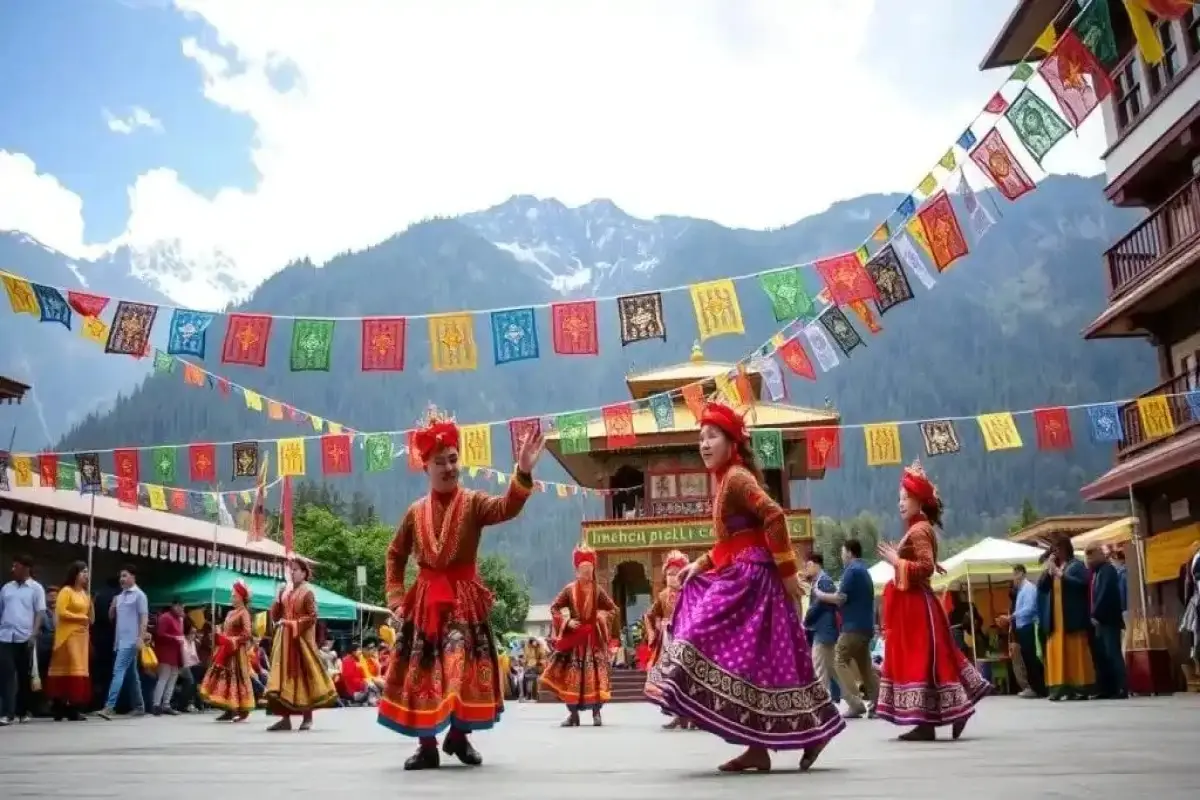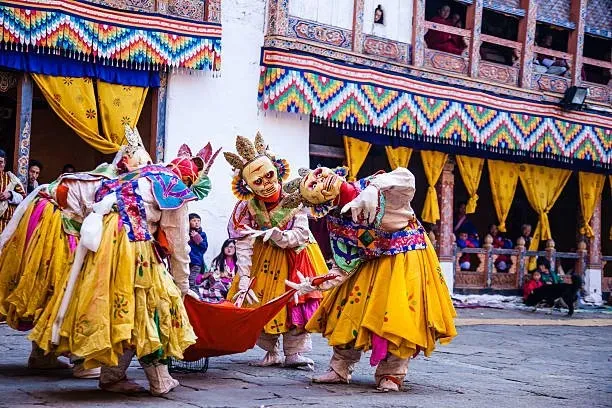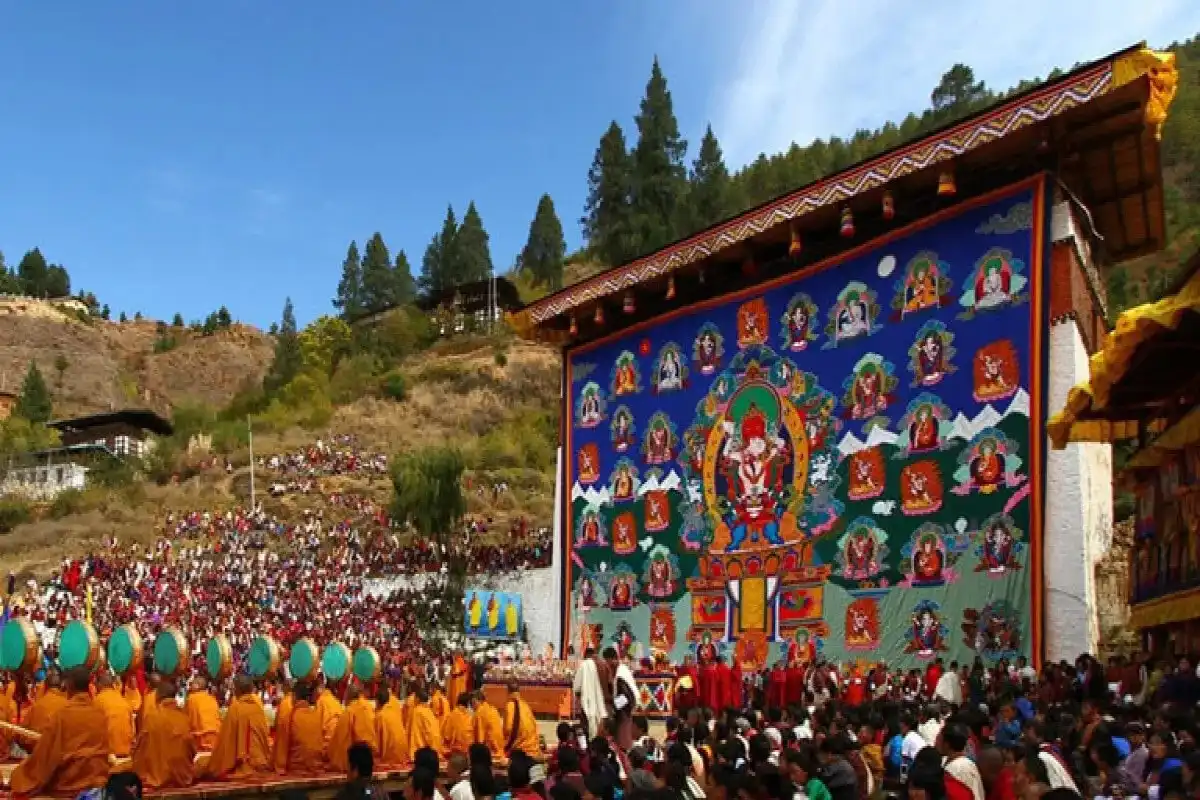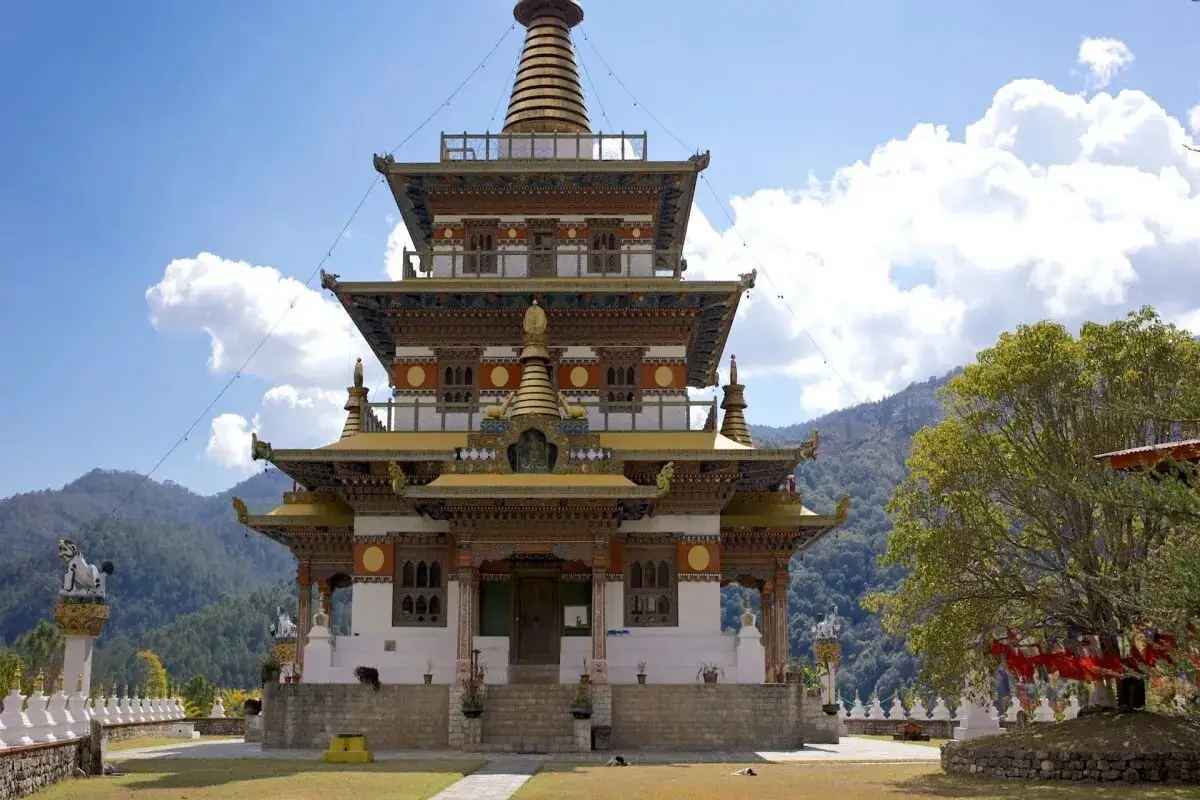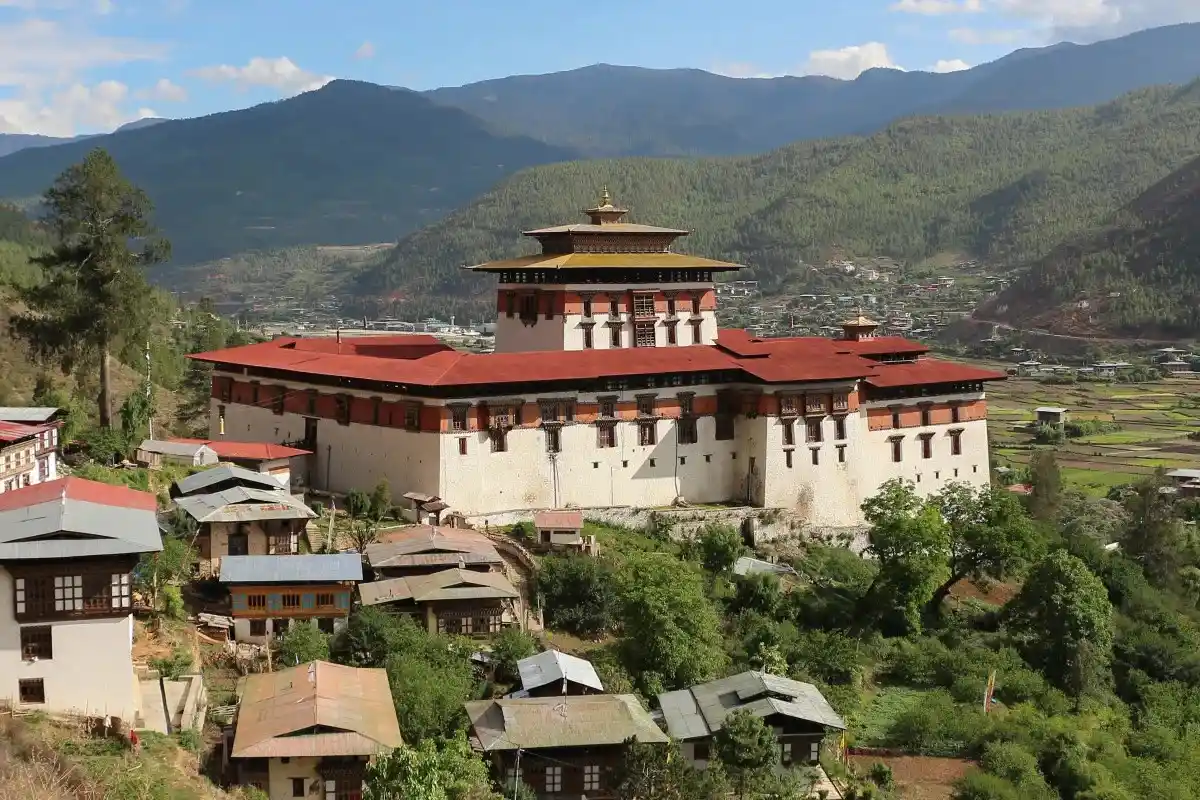Bhutan East West Tour - 11 Days
The Bhutan East West Tour is an ideal trip to discover the best of Bhutan in just 11 days. The trip allows you to explore all over the country and see the beautiful and well-known places. Paro is where your journey begins. Then you will be transported to Thimphu, the capital, which is a charming combination of tradition and the modern way of life. Punakha is the place where you will be impressed by the visually striking Punakha Dzong and the beautiful rivers and valleys surrounding it. Following this, you will have the opportunity to explore the remarkable Phobjikha Valley, renowned for its pristine natural landscapes and as a habitat for the black-necked cranes.
Highlights of the tour
- Hike to the Tiger's Nest Monastery
- Visit the colourful Paro Tsechu festival
- Experience the local farmhouse hospitality of Bhutan
- Experience the peaceful Phobjikha Valley, the black-necked cranes' home
- Discover the spiritual centre of Bumthang (Jakar)
Trip Overview
The trip continues to Trongsa and Jakar in the Bumthang district, where you can explore the historic temples and learn more about Bhutan's past and culture. Lastly, hiking to the amazing Tiger's Nest Monastery will be a beautiful ending in Paro. It is indeed a perfect offer to get a dose of nature’s best along with Bhutan’s culture and traditional life. Immerse yourself in Bhutan’s rich cultural heritage, breathtaking natural landscapes, and tranquil way of life.
Highlights of the Bhutan East-West Tour
You will go on a trek to Tiger's Nest, see Paro Tsechu (if the dates match), live the local life at a farmhouse, visit Phobjikha Valley, and unveil spiritual Bumthang.
Hike to the Tiger's Nest Monastery
Experiencing a hike to Tiger's Nest will definitely be one of your lifetime experiences. The Monastery is visually stunning as it is perched on a vertical rock face over the Paro Valley. The trail allows you to explore the beautiful pine trees, and you can stop to rest or take in the nice view along the way. Once there, you will be stunned by the amazing location and the vibe of spirituality. It is one of the most spiritually pure places in Bhutan, and a lot of people say that Guru Rinpoche was here during his meditation. It is really a hard and long hike, but in the end, the peace of mind and the amazing surroundings will become the most beautiful memory of your trip.
Visit the colourful Paro Tsechu festival (if dates match)
Paro Tsechu is not only one of the most vibrant but also one of the most energetic festivals of Bhutan. Therefore, watching the festival with your own eyes will be the experience you are going to have if you are in Paro during the celebration. The festival is a courtyard celebration at Rinpung Dzong where monks perform the mask dances in mysterious costumes. At the festival, people dressed in their traditional clothes gather together to take blessings, to meet new people to have a nice time in the atmosphere of the festival. Thus, you get a direct experience of the culture, arts, and spirituality of Bhutan. It is something really special to be at this festival and to be so close to the people and to know their daily habits.
Experience the local farmhouse hospitality of Bhutan
During your visit, you’ll have the opportunity to experience daily life in a traditional Bhutanese farmhouse, engaging directly with a local family. You will get a very nice way to look at the daily life of the people living in the remote areas of the country of Bhutan. This visit also enables you to view the home layout, understand local customs, and have a taste of the local food or butter tea. In most cases, families give demonstrations of their food preparations or of how they make cheese and liquor from their area. This is an easy and quite heartfelt way to enjoy the Bhutanese culture and be touched by the love and warmth of the people of this wonderful country.
Experience the peaceful Phobjikha Valley, the black-necked cranes' home
Phobjikha is a vast, peaceful valley that is one of the most beautiful natural places in Bhutan to be discovered. It is a glacial valley that is the winter habitat of black-necked cranes, a rare species that fly over Tibet to Bhutan between late October and early March. The place is so quiet that one can have a very nice experience of walking through the trails and enjoy bird-watching as well. Besides, you could also visit the stunning Gangtey Gompa, a very unique place that is situated on the opposite side of the valley. The valley is extraordinary in its ecology and peace, and thus Phobjikha is a matchless break on your journey, especially if you are looking for the ripe and spiritual ecology of Bhutan.
Discover the spiritual centre of Bumthang (Jakar)
You will get to see ancient and holy temples that are among the oldest in the whole of Bhutan in Bumthang. The region is called the nation's spiritual centre. Moreover, you will also be able to see the peaceful religious places like Jampay Lhakhang and Kurjey Lhakhang. The valley is calm and stunning with its rivers, farmlands, and villages that are still following the traditional way of life. The place is also famous for the authentic woollen fabrics, thus you can witness the artisans at Zugney village making Yathra. The calmness and firm religious faith in Bumthang has turned it into a stop on your tour where you can have some time of quiet self-reflection and also a cultural experience.
Conclusion
The 11-day Bhutan East West Tour is an ideal package that gives you the best of three aspects of life-culture, nature, and spirituality. Your encounter with the peak of Bhutan’s old customs and pure nature will be from the awe-inspiring Tiger’s Nest Monastery to the calm Phobjikha and Bumthang valleys.
Experience the culture and nature of Bhutan through the journey of festivals, historical dzongs, and the friendliness of the locals will always reside in your mind. The trip from east to west is like exploring the entire country of Bhutan, as each place tells you a different story. Hence, an enriching and unforgettable trip like this will not be easy to get.
What’s more, you leave for home with a feeling of being inspired, rejuvenated, and having a spiritual connection with the calm Bhutanese spirit.
The trip continues to Trongsa and Jakar in the Bumthang district, where you can explore the historic temples and learn more about Bhutan's past and culture. Lastly, hiking to the amazing Tiger's Nest Monastery will be a beautiful ending in Paro. It is indeed a perfect offer to get a dose of nature’s best along with Bhutan’s culture and traditional life. Immerse yourself in Bhutan’s rich cultural heritage, breathtaking natural landscapes, and tranquil way of life.
Highlights of the Bhutan East-West Tour
You will go on a trek to Tiger's Nest, see Paro Tsechu (if the dates match), live the local life at a farmhouse, visit Phobjikha Valley, and unveil spiritual Bumthang.
Hike to the Tiger's Nest Monastery
Experiencing a hike to Tiger's Nest will definitely be one of your lifetime experiences. The Monastery is visually stunning as it is perched on a vertical rock face over the Paro Valley. The trail allows you to explore the beautiful pine trees, and you can stop to rest or take in the nice view along the way. Once there, you will be stunned by the amazing location and the vibe of spirituality. It is one of the most spiritually pure places in Bhutan, and a lot of people say that Guru Rinpoche was here during his meditation. It is really a hard and long hike, but in the end, the peace of mind and the amazing surroundings will become the most beautiful memory of your trip.
Visit the colourful Paro Tsechu festival (if dates match)
Paro Tsechu is not only one of the most vibrant but also one of the most energetic festivals of Bhutan. Therefore, watching the festival with your own eyes will be the experience you are going to have if you are in Paro during the celebration. The festival is a courtyard celebration at Rinpung Dzong where monks perform the mask dances in mysterious costumes. At the festival, people dressed in their traditional clothes gather together to take blessings, to meet new people to have a nice time in the atmosphere of the festival. Thus, you get a direct experience of the culture, arts, and spirituality of Bhutan. It is something really special to be at this festival and to be so close to the people and to know their daily habits.
Experience the local farmhouse hospitality of Bhutan
During your visit, you’ll have the opportunity to experience daily life in a traditional Bhutanese farmhouse, engaging directly with a local family. You will get a very nice way to look at the daily life of the people living in the remote areas of the country of Bhutan. This visit also enables you to view the home layout, understand local customs, and have a taste of the local food or butter tea. In most cases, families give demonstrations of their food preparations or of how they make cheese and liquor from their area. This is an easy and quite heartfelt way to enjoy the Bhutanese culture and be touched by the love and warmth of the people of this wonderful country.
Experience the peaceful Phobjikha Valley, the black-necked cranes' home
Phobjikha is a vast, peaceful valley that is one of the most beautiful natural places in Bhutan to be discovered. It is a glacial valley that is the winter habitat of black-necked cranes, a rare species that fly over Tibet to Bhutan between late October and early March. The place is so quiet that one can have a very nice experience of walking through the trails and enjoy bird-watching as well. Besides, you could also visit the stunning Gangtey Gompa, a very unique place that is situated on the opposite side of the valley. The valley is extraordinary in its ecology and peace, and thus Phobjikha is a matchless break on your journey, especially if you are looking for the ripe and spiritual ecology of Bhutan.
Discover the spiritual centre of Bumthang (Jakar)
You will get to see ancient and holy temples that are among the oldest in the whole of Bhutan in Bumthang. The region is called the nation's spiritual centre. Moreover, you will also be able to see the peaceful religious places like Jampay Lhakhang and Kurjey Lhakhang. The valley is calm and stunning with its rivers, farmlands, and villages that are still following the traditional way of life. The place is also famous for the authentic woollen fabrics, thus you can witness the artisans at Zugney village making Yathra. The calmness and firm religious faith in Bumthang has turned it into a stop on your tour where you can have some time of quiet self-reflection and also a cultural experience.
Conclusion
The 11-day Bhutan East West Tour is an ideal package that gives you the best of three aspects of life-culture, nature, and spirituality. Your encounter with the peak of Bhutan’s old customs and pure nature will be from the awe-inspiring Tiger’s Nest Monastery to the calm Phobjikha and Bumthang valleys.
Experience the culture and nature of Bhutan through the journey of festivals, historical dzongs, and the friendliness of the locals will always reside in your mind. The trip from east to west is like exploring the entire country of Bhutan, as each place tells you a different story. Hence, an enriching and unforgettable trip like this will not be easy to get.
What’s more, you leave for home with a feeling of being inspired, rejuvenated, and having a spiritual connection with the calm Bhutanese spirit.
Short Itinerary
Arrive in Paro, drive to Thimphu, visit Tamchog Lhakhang, and evening walk in the city
Explore Thimphu - Memorial Chorten, Takin Sanctuary, Trashichho Dzong, museums, and handmade paper factory
Drive to Phobjikha via Dochula Pass, visit Gangtey Gompa, and explore the valley
Travel to Jakar, stop at Chendebji Chorten, Trongsa Dzong, and Zugney Yathra weaving village
Sightseeing in Bumthang - Jampay Lhakhang, Kurjey Lhakhang, Tamshing Monastery, Kenchogsum Lhakhang, Swiss Farm, and Wangdicholing Palace
Drive to Trongsa, visit Trongsa Dzong and the Watchtower Museum
Trongsa to Punakha via Pelela Pass, visit Chendebji Chorten, and explore Punakha town
Visit Punakha Dzong, hike to Chimi Lhakhang, and drive to Paro
Paro sightseeing - National Museum, Rinpung Dzong, Kyichu Lhakhang, Drukgyel Dzong, and farmhouse visit
Hike to Tiger’s Nest Monastery
Departure from Paro
Bhutan East West Tour Itinerary
After your arrival at Paro International Airport, our company representatives will be there to welcome you with all warmth. You will be given a short orientation, and then you will be taken to Thimphu, which is the capital city of Bhutan. The distance between the two cities is approximately 1.5 hours, and during the trip, you will have fantastic views of the mountains, rivers, and villages that are typical of the region. On the way, you can get to Tamchog Lhakhang, which is a temple established by the known iron bridge maker Thangtong Gyalpo.
After you get to Thimphu, you can take a break at your hotel for a while. A brief walk through the area offers valuable insight into the daily lives of locals. You will have a night's stay in Thimphu.
Today, you will know Thimphu, the lively capital of Bhutan, and will spend the entire day in the city. Firstly, the Memorial Chorten will be your destination. It is very important both from a religious and a historical point of view. Then you will head to the Zilukha Nunnery and after that to the Takin Sanctuary, where you can watch the national animal of Bhutan.
Then, you will move to Trashichho Dzong, a very nice fortress. Moreover, you will be visiting the Traditional School of Arts & Crafts to watch students learning Bhutanese painting, sculpture, and weaving. At the Indigenous Hospital, you will understand traditional Bhutanese medicine. The Textile Museum and Heritage Museum allow visitors to discover the culture and daily life of Bhutan. And finally, you will be at the Handmade Paper Factory, discovering the traditional paper-making ways. With this, your day ends, and you will be staying in a hotel in Thimphu.
After having breakfast, a beautiful drive through the Phobjikha Valley will be arranged for you to Gangtey. Firstly, you will be taken to Dochula Pass (3100m), where you can rest for a while, and you will get to enjoy a stunning view of the Himalayan ranges as well as the 108 memorial chortens. Next, you will be spending some time at WangdiPhodrang town to refresh your mind and get an insight into the neighbouring areas.
Later on, you will proceed to a calm and lovely trip to Phobjikha Valley to see the Gangtey Gompa, a holy place. Phobjikha Valley is a secure retreat of the black-necked cranes, which come there to spend the winter, and is famous for its vast glacial plains and clean air. Gangtey Gompa is the Nyingmapa school of Tibetan Buddhism's six major monasteries and complexes. On completion of the visit, spend a peaceful evening in the valley. You will stay overnight at Phobjikha.
On the fourth day, the journey proceeds from Gangtey to Jakar. Jakar is renowned for its vibrant traditions, historical significance, and diverse heritage. Then you will make a stop at Chendebji Chorten, a tall white stupa that can be easily seen from far away. On your trip to Trongsa, you will proceed and halt for lunch. While having lunch, you will be able to admire the magnificent Trongsa Dzong with its amazing views. It will be a lovely bypass on your journey. Afterwards, continue your trip to Jakar. You will stop over at Zugney village to look at local weavers who are making Yathra, a traditional woollen cloth that is made in the region. In the evening, you will be in Jakar and will make your way to the hotel. You will stay in Jakar overnight.
Today, you will explore the lovely Bumthang valley in depth, a valley renowned for its religious history and cultural heritage. You will begin your day by touring one of Bhutan's oldest temples, Jampay Lhakhang. Subsequently, you will visit the sacred Kurjey Lhakhang, an honoured site where Guru Rinpoche is believed to have meditated.
After that, you will explore Tamshing Monastery, the place of old wall paintings and spiritual heritage. There will also be a short break on the journey at Kenchogsum Lhakhang, a historic temple with profound religious significance. You will also be going to the Swiss Farm to witness the local cheese and juice production.
Then, you will also visit the holy Wangdicholing Palace after sightseeing at Jakar Dzong, which is the 'Castle of the White Bird', and mostly the day ends with this visit. You will stay at Jakar tonight.
The drive to Trongsa will be a great way to start your day after having a delightful breakfast at your hotel. On your way, you will be passing the valleys, the forests, and the traditional villages, all of which are typical of the area and offer stunning views. The return trip is about 3 to 4 hours, during which you can get off and take photographs at a number of beautiful places or have a short walk.
When you get to Trongsa, go and check into your hotel. Then take some time to relax. In the afternoon, you may explore the spectacular Trongsa Dzong, the fortress that is one of the largest and most important in Bhutan. The dzong is located at the steep side of the mountain and thus offers lovely views of the valley around. Furthermore, you might visit the Trongsa Museum, which is close by and can be found in the old watchtower. You will stay the night at a hotel in Trongsa.
On this day, you will visit the Trongsa Dzong, a majestic stronghold that has been there for almost the entire history of the country of Bhutan. After that, you will visit the Ta Dzong, the museum in the watchtower, which is the place where the story of the Bhutanese monarchy and culture is narrated. After touring the sights, make your way to Punakha. The trip will take you over the beautiful Pelela Pass (3,390m), where you will get magnificent views of the mountains and see the prayer flags blowing in the wind. Have a break at Chendebji Chorten, which is on the way. The journey passes through different types of nature, such as alpine forests with snow-covered trees, and then on to the warmer valleys as you go down to Punakha. You will reach Punakha in the late afternoon, which is the former capital of Bhutan. Then you will have a rest at your hotel, and stay overnight in Punakha.
Two of the most breathtaking places in Punakha will be your today’s destination. The first place will be the beautiful Punakha Dzong, a stunning piece of architecture, built where the Pho Chhu and Mo Chhu rivers meet. After the visit to the dzong, you will take a short, beautiful walk through the village and rice fields to Chimi Lhakhang, the temple of fertility dedicated to the Divine Madman.
After your visit, you will start your journey to Paro via Thimphu. The trip allows beautiful views of nature and a chance to think about the landscapes and culture you have met till now. Later in Paro, you will be taken to your hotel, where you are free to have a lovely evening. Your accommodation tonight will be at a hotel in Paro.
Today, you will visit the cultural sites of Paro that are the most significant. The National Museum is the first place to go. It presents the history, art, and culture of Bhutan. Then you will be going on foot to the Rinpung Dzong, which is a magnificent fortress that, in addition, is a place of worship and the administrative centre.
Onward to Kyichu Lhakhang, established one of the oldest as well as the most sacred temples in Bhutan, and after that, visit the drift of Drukgyel Dzong, a once-vibrant fortified town that lies in ruins, gradually surrounded by the valley with breathtaking vistas. Afterwards, you will visit a traditional farmhouse in Bhutan, where you will be able to see the local lifestyle and experience the local hospitality. You will be spending the night at a hotel in Paro tonight.
Hiking to the Taktsang Monastery will be today’s adventure. Known as the Tiger’s Nest, this holy place clinging to the side of the canyon 900 meters above the valley provides not only breathtaking views but also a spiritual experience. The hiking time there and back is about 4 to 5 hours, and it is the most memorable part of any trip to Bhutan.
Then, you will have a tour of the Drukgyel Dzong ruins, and if there's time, you can also visit Rinpung Dzong. In the afternoon, you will be able to attend the Paro Tsechu, a vibrant festival that includes traditional mask dances, music, and locals’ rejoicing. Thus, it provides a rare and unmediated insight into the Bhutanese culture. You will be staying at a hotel in Paro overnight.
After having breakfast, the guide will be there to take you to Paro International Airport for your departure. The drive through the calm valley will be your last, so take a moment to recall the lovely memories and experiences that you have collected during your 11-day trip across Bhutan. The blending of the majestic dzongs and temples, the peaceful mountain valleys, and the vibrant cultural exchanges has really been an amazing and memorable way for you to experience Bhutan.
The guide will assist you when you check out and see you off at the airport. Even though your tour in Bhutan is over, the nice, spiritual, and beautiful country will always be in your heart. May you have a safe and wonderful trip.
Know Before You Travel
-
Know More About Bhutan:
Eleven days in Bhutan is a trip not only about the places that you visit, but a very intense cultural and spiritual experience as well. Travelling from Paro to Bumthang offers a unique opportunity to experience both the region’s sacred sites and its remarkable natural beauty, meet the locals, and observe the living traditions that have been there for a long time and have not changed.
Drinking tea in a Bhutanese farmhouse, hiking to the sacred Tiger's Nest Monastery, and silently strolling around the peaceful temples will be your activities. The views differ with each site, from the forested hills to the expansive glacial valleys, allowing you to experience the pure delight of Bhutan.
If you are lucky enough to be at the festival at the right time, then attending the Tsechu festival will let you see the very essence of Bhutanese joy and spirituality. This is a journey that encourages you to take time, reflect, and return home not only with some beautiful memories of the things you did during the travel but also with a fresh perspective towards life and, above all, inner peace.
FAQs for Bhutan East West Tour
On this trip, you will explore Paro, Thimphu, Punakha, Phobjikha, Trongsa, and Bumthang, all of which are the major cultural, spiritual, and scenic highlights of Bhutan.
If your trip dates match, you will see the Paro Tsechu, which is among the most vivid and significant religious festivals of Bhutan.
The drives are between 1.5 to 4 hours; however, you can enjoy the beautiful landscapes of Bhutan during the drives as there are scenic routes and stops across the route.
Most hikes are of moderate intensity, except the Tiger’s Nest climb, which requires good condition and endurance. Your guide will be there to support and motivate you throughout the trek.
You need a visa and all necessary permits for your trip. These documents can not be received on the day of your arrival, so they must be processed before coming here. After you book a trip with us, we will manage these papers for you. Your Bhutan visa is arranged by Orrog as part of the package.
The main way to come to Bhutan is through Paro International Airport, which is well-connected to cities like Bangkok, Delhi, Kathmandu, and Singapore. Most people arrive by air, but if you plan to come via road, you can enter through Phuentsholing, located on the southern border with India, which is the most commonly used entry point.
It is recommended to apply for the visa at least 20 days before your planned departure date so that there is enough time for processing your Bhutan visa, finalizing your itinerary, and arranging your guides and transportation. Although visa processing itself is relatively fast once payment is received, early preparation helps avoid delays and ensures availability, especially during peak seasons (spring and autumn).
You don’t require a passport-size photo for the visa, but it is wise to carry at least 2–4 recent passport-sized photographs during your trip. These may be needed for local permits, registration, or when applying for a local SIM card upon arrival in Bhutan.
Yes, you can lengthen your stay in Bhutan either before or after your trip. Bhutan’s tourism model requires visitors to pay a Sustainable Development Fee (SDF) and a daily package cost, so any extra days will involve additional charges. Extensions are a great opportunity to explore cultural sites in Paro, Thimphu, or even add another short trip or day hike.
Yes, Bhutan requires full tour payment in advance before your visa can be processed and issued. The government of Bhutan regulates this policy to ensure that all travel arrangements are confirmed through a licensed Bhutanese tour operator. We are a licensed tour operator that ensures you have everything you need for a trouble-free trip.
Any personal expenses are not covered in the package like:
- Tips for your guide and other staff
- Bottled drinks and snacks(personal expense)
- Souvenirs or local crafts
Credit cards are easily accepted in major cities like Paro and Thimphu. But in remote areas, you may not have access to a card or an ATM. So, it is best to carry some cash before heading for the trip.
Tipping is not mandatory, but it is a widely appreciated gesture and a customary way to show gratitude for good service. The tipping guideline would be to give USD 5-10 per day as a tip for the guides and other staff.
Paro International Airport is the only international airport in Bhutan. It is well connected by flights from cities like Bangkok, Delhi, Kathmandu, and Singapore.
Yes, airport pick-up and drop-off are included in the package. We will have your guide and driver meet you at the airport and transport you to your hotel.
While Bhutan's roads are mostly paved, some parts are narrow, winding, and occasionally affected by weather. However, we ensure your travel is safe, well-maintained, and driven by an experienced professional throughout the journey.
Once you arrive in Paro, we will arrange private ground transportation to the starting point as we pass through lush valleys and traditional villages. So, you don’t have to worry about any transportation services.
Yes, it is very safe to travel even with children in Bhutan. Roads are well-maintained, and the pace of travel is generally relaxed and child-friendly.
We will usually travel in comfortable, private vehicles with experienced drivers. All ground transportation is included in your package.
The Bhutanese Ngultrum is used in Bhutan. All local transactions during the trip will be in BTN.
US Dollars (USD) are generally accepted at larger hotels, souvenir shops, and tour operators, particularly in Paro and Thimphu. However, it’s advisable to convert your currency to BTN for general purchases in rural areas. Other currencies like the Euro or the Pound are not commonly accepted directly.
No, credit or debit cards are not accepted on the trip, as it takes you through remote regions with no banking or electronic payment access. All trip-related payments like accommodation, meals, permits, etc, are paid in advance.
You can exchange foreign currency at the Paro International Airport, at banks, or through licensed money changers in cities like Thimphu and Paro. It's best to exchange enough cash before heading out on the trip.
The national language is Dzongkha, but many Bhutanese also speak English. If you speak English and are worried about communicating with the local people, you will have your guide as a translator.
Yes, all licensed tour guides in Bhutan are required to speak fluent English. Many are also trained in other languages such as German, Japanese, or French. Communication during the trip will be smooth and clear in English.
Most signboards, tourist maps, and information brochures are written in English, especially in tourist destinations like Paro, Thimphu, and trailheads. Directional signs along routes are often labeled in both Dzongkha and English.
No, learning Dzongkha is not at all needed for the trip, but knowing a few basic words like "Kuzu zangpo la" (Hello) or "Kadrinche la" (Thank you) is a good way to interact with the locals.
Language barriers are minimal, as your guide will handle all communication with locals and support staff. Your guide will translate for you during your interaction with the locals.
You can learn about the Bhutanese culture through local interactions, homestay visits, cooking classes, traditional art workshops, and attending local festivals and religious ceremonies.
To greet people, you can greet with locals “Kuzu zangpo la” (Hello) by performing a slight bow. Most common greetings include physical greetings, such as shaking hands less visible, especially in rural areas.
Yes, but remember to seek permission, especially when taking photos of monks, locals, or temples. Please note that clicking photos is not allowed at most religious sites.
Visitors should dress modestly and respectfully. This means:
- Covering shoulders and knees
- Removing hats and sunglasses
- Not wearing shorts or sleeveless tops
This applies to both men and women.
Yes, Bhutanese society is deeply rooted in Buddhism and tradition. Here are some key taboos:
- Do not point your feet at people or sacred objects
- Never touch anyone on the head, as it is considered sacred
- Walk clockwise around temples, stupas, and religious monuments
- Avoid public displays of affection
While gifts are not expected, they may be accepted graciously if given with respect. It is advisable to consult with the guide before giving out anything.
Bhutan typically uses Type C, Type D, and Type G electrical outlets. Standard safe voltage is 230V and frequency is 50Hz; therefore, ensure that your equipment is compatible with this voltage.
Indeed, it is highly advised to take along a universal travel adapter, particularly one to fit a variety of types of plugs, because plugs can be different in a hotel or a guesthouse.
Bhutan follows Bhutan Time (BTT), which is UTC/GMT +6 hours. This time zone remains consistent throughout the year.
No, Bhutan does not observe daylight saving time. The country maintains the same time year-round.
Bhutan is 30 minutes ahead of India. For example, 12:00 PM in India is 12:30 PM in Bhutan.
Yes, souvenirs can be bought in Paro or Thimphu before or after the trip.
Some popular souvenirs include hand-woven textiles (kira and gho fabric), prayer flags, thangka (religious scroll) paintings, handmade paper products, traditional masks, and Buddhist artifacts.
You can do some gentle bargaining in local street markets. However, in government-run shops and fixed-price stores, prices are usually non-negotiable.
Yes, you can easily purchase a SIM card upon arrival in Bhutan. We will assist you with the process, and you'll need a passport copy and a passport-sized photo.
No, internet access is not available during the trip. However, Wi-Fi is available in hotels in Paro and Thimphu before and after the trip.
B-Mobile (by Bhutan Telecom) and TashiCell are the two main service providers. B-Mobile tends to have better coverage in rural and mountainous areas
Since the weather can be unpredictable and temperatures can vary drastically, layered clothing is essential. You should pack:
- Base layers (thermal tops and bottoms)
- Insulating layers like fleece or down jackets
- Waterproof and windproof outer layers
- Warm hats, gloves, and neck gaiters for freezing conditions
- Moisture-wicking socks and weatherproof trekking boots
Nighttime temperatures can be extremely cold, especially at high-altitude places. So you need to have enough clothing to keep you warm.
The weather is clear with mild daytime temperatures during spring and autumn.
Tsechu is a religious festival held in honor of Guru Rinpoche, featuring mask dances, rituals, and traditional performances. It's a colorful and spiritual experience for all ages.
Yes, festivals are family-friendly and offer a unique cultural experience for children, although large crowds can be overwhelming for very young kids.
Modest, respectful attire is recommended. Traditional Bhutanese dress (Gho/Kira) is encouraged and can be arranged for you.
Reviews & Ratings
-
Guarantee -
Thimphu,Bhutan -
975+17160228
Ready to Explore Bhutan?
Start your journey today and discover the magic of Bhutan with our expert guides and carefully crafted tours.
Book This Trip
-
No booking or credit card fees -
Best price guarantee -
Full customize trip
Ask a Question
Feel free to ask us anything about this tour. A travel expert will then get back to you as soon as possible
Ready to Explore Bhutan?
Start your journey today and discover the magic of Bhutan with our expert guides and carefully crafted tours.

